Spring Cycle
March 2024 Arts & Humanities Initiative (AHI) Awardees
March 2024 Arts & Humanities Initiative (AHI) Awardees
About the Arts & Humanities Initiative (AHI) Program
The Office of the Vice President for Research is proud to present the March 2024 Arts & Humanities Initiative's (AHI) Program Awardees:
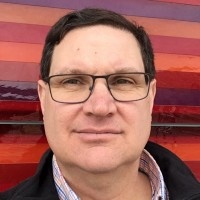
Matthew Hill (Associate Professor, Anthropology, CLAS)
Arts & Humanities Initiative Standard Grant
A World Teeming with Dogs: Dogs at the Intersection of White Colonizers, Enslaved Africans, and Native Americans in Colonial Virginia
This project will contribute to our understanding of human-animal relationships and the influence of human social structures on these relationships. In the British (and later American) settlement of Virginia in the seventeenth to nineteenth centuries, White Europeans and Euroamericans, Native North Americans, and enslaved African people lived in close geographic proximity but were separated by race, class, and culture. Within this landscape were numerous dogs, living with disparate human communities as faithful companions, workers, and symbols of identity. The social boundaries separating human groups were imagined to separate their canine companions as well. People often resisted their defined social categories and moved between communities in complicated ways, however, prompting questions about the true separation of their dogs. Did these human communities develop and maintain dogs that were physically, genetically, and behaviorally different? This project describes dogs in colonial period Virginia and evaluates dog variation within the human social landscape. Grant funds are requested to study the archaeological remains of approximately 40 colonial period Virginia dogs from seven archaeological sites occupied by White landowners, and Enslaved people. Using information gained from analysis of ancient dog genetics, dietary isotopes, and bone size and shape, this project seeks to determine whether dogs from White European and Euroamerican, and enslaved African communities mated with each other, ate different foods, were of different sizes and shapes and had different life histories. This innovative work is one of the first studies to address human-dog relationships during the European colonization of North America using archaeological data and to consider how differences in human communities here are expressed in dog use and breeding. The successful completion of this project will result in the publication of 2 to 3 articles in high profile archaeological journals and provide preliminary data critical for securing external funding from the National Science Foundation. Finally, knowledge gained from this work will provide lessons and projects in at least three Anthropology courses on topics involving human environmental interactions.

Horacio Castellanos Moya (Associate Professor, Spanish & Portuguese, CLAS)
Arts & Humanities Initiative Standard Grant
Revisiting Exile
I am requesting the AHI Grant for a creative nonfiction project titled «Revisiting Exile». The objective is to address my experiences as a writer while I lived long periods of exile in different places. In August 1997, I received death threats in my country (El Salvador) after launching my controversial novel El asco. I left the country and lived in Madrid, Mexico City, Guatemala City, and Frankfurt, in the period from 1997 to 2006. This last year I finally settled down permanently in the US. The book will be a memoir of that time, but told from the present, revisiting the places where I stayed, which will allow me a reflective comparison of the past and the current situation, not only concerning my experiences and my way of understanding the world, but also regarding the development of cultural and political phenomena in those cities. The AHI funds will allow me to visit those places again and see them from the current time. The book will also be a mix of narratives genres: memoir, travel literature, and essay. After publishing 13 fiction novels and three essay books, for the first time I will work on a book strictly focused on the autobiographical.

Johanna Kasimow (Assistant Professor, Theatre Arts, CLAS)
Arts & Humanities Initiative Standard Grant
The Grüb: A new performance work that probes sensations of hiding and rhythms of survival
The Grüb is a new semi-autobiographical, experimental play instigated, directed, and co-written by Assistant Professor Johanna Kasimow that tells a story of hiding across generations. The piece probes sensations of hiding, rhythms of survival, and trans-generational inheritance through the surreal existence of a family living in a pitch black hole dug under a barn to escape genocide. As a young boy, Kasimow’s father hid with his family from the Nazis in a hole underneath a barn outside Vilnius, Lithuania. From 1942 until 1944 they lived in an underground pit with no light. The family called it the “grüb”—Yiddish for “grave.” Pulling from the traditions of clown, melodrama, grotesque, and hyper-realism, the piece is staged as a theatrical diptych, set in a woman’s bedroom and an underground pit, following the everyday rhythms of life and survival across two very different worlds. The play is a meditation on the sensations of confinement and the possibilities for multi-generational relief. Kasimow is writing the piece with longtime collaborators Eva Steinmetz and Alexandra Tatarsky, who each have critically acclaimed practices of theatre-making.
The AHI Standard Project grant would fund the final development workshop, to be held in June 2024 in Philadelphia, PA. This is the last of three development workshops and will be focused on experimenting with and finalizing the visual design for the piece and completing the script with a new key collaborator, set designer Maiko Matsushima. All experiments and discoveries will be fully documented through archival video, which will also be used to pursue funding and performance opportunities for a world premiere in 2026-2027.
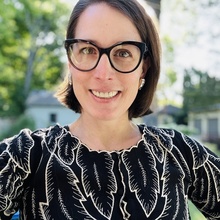
Sarah Bond (Associate Professor, History, CLAS)
Arts & Humanities Initiative Standard Grant
Pasts Imperfect: Writing and Publishing for the Public
The public panel and workshop, titled “Pasts Imperfect: Writing and Publishing for the Public" is planned for September 24, 2024 in the Stanley Museum of Art. It is a public discussion about an interdisciplinary approach to developing, publishing, and amplifying the writing of scholars. The project focuses on publication as a medium for lifting up writers and artists from diverse and historically marginalized communities; graduate students; and scholars looking to amplify their work. It will also explore teaching them to write public facing scholarship from pitching to publication. The event will be a panel with three scholars present: Hrag Vartanian (Editor-in-Chief at Hyperallergic), Stephanie Wong (Editor and writer at the University of Michigan Alumni Magazine and a PhD candidate in History at Brown expected to graduate in May), and Jennifer Banks (Senior Executive Editor for Religion and the Humanities at Yale University Press). The panel will be recorded as part of a larger public writing forum and toolbox website helping scholars here at Iowa and beyond to write and publish public facing work that meets the public where they are, and then introduces the populace to the work done within the academy.
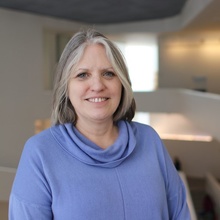
Anita Jung (Professor, School of Art & Art History, CLAS)
Arts & Humanities Initiative Major Project Grant
Video Project for the Waswo Collection of Indian Printmaking
The proposed project seeks funding to support the creation of a feature-length video documentary contextualizing the Waswo Collection of Modern and Contemporary Indian Printmaking housed at the University of Iowa Stanley Museum of Art (Stanley). The Waswo Collection, comprising over 300 prints by 100 artists, holds paramount significance in preserving India's fine art printmaking heritage. Through a commitment to non-commercial fine art printmaking and artistic excellence, the collection serves as a reservoir of cultural representation and artistic narratives.
Drawing on previous work conducted during a Fulbright-Nehru Academic and Professional Excellence Award in 2022, which initiated short video interviews with living artists from the Waswo Collection, the project will complete essential interviews and realize a comprehensive documentary video of the collection.
This major project will be a collaboration with the videographer, Pooja Usha, and the curator, Amit Kumar Jain, to finalize the short individual interviews and to then produce the documentary. This will incorporate over sixty video interview shorts with artists featured in the collection to document the evolution of fine art printmaking in India, offering firsthand insights from artists, educators, and individuals knowledgeable about historical and contemporary trends in the field. Additionally, the project will facilitate visits to government-run printmaking studios, participation in art fairs, and interactions with emerging academic programs, enriching the documentary with diverse perspectives and cultural insights.
Over a two-month period in 2025, the project will conduct ten to fifteen additional individual artist interviews and visit important government-run printmaking studios across various cities and regions in India. Jung’s expertise in printmaking combined with Jain’s knowledge of Indian art, will play a crucial role in developing the overarching narrative and script for the documentary, and the videographer, Usha will provide the expertise to edit these materials into a compelling visual narrative. Ultimately, the project seeks to transcend geographical and linguistic boundaries, fostering cross-cultural understanding and appreciation of Indian printmaking while contributing to academic scholarship and the preservation of artistic legacies. This work will accompany an exhibition at the Stanley and the Digital Library has agreed to house this ambitious venture, preserving and creating accessibility to these materials.

Mary Beth Easley (Associate Professor, Theatre Arts, CLAS)
Arts & Humanities Initiative Major Project Grant
ARatorio for the Mis_Remembered: An Immersive AR/VR Musico-Theatre Work
ARatorio for the Mis-Remembered is a live musico-theatre work that merges historical practices of documentary theatre --- theatre of the real --- with the emerging technologies of AR/VR. Drawing on interviews of UI student and staff veterans (coordinated with UI IVETS staff), this project promotes a symbiosis between the virtual ‘aura’ of AR/VR and secular oratorio theatre to engage audiences in an immersive memorial of these veterans’ stories. The question this work seeks to address is: How can we use new forms of theatrical storytelling (including live-streaming and AR/VR) to “body forth” these stories, while simultaneously reaching physically present and remote audience members?
This AHI Grant supports the final phase of this creative project, following a prototype performance supported by Jumpstarting Tomorrow Next Stages Grant for the creation of work that utilizes Iowa’s Motion Capture Studio. Based on the prototype research and development, I’ve a deeper understanding of how to create work whose visual and auditory worlds are informed by the immersive possibilities of AR/VR, while still harnessing the visceral capacity of live performance. If successful, with the AHI Major Projects grant I plan to complete developmental Phase 3 of this project leading to a full, public multi-media performance.
Key objectives for this grant period:
- Follow-up, new interviews of UI veterans, with material to be woven into libretto-score (Part 1: Before Service: Part 2:During Service; Part 3: After Service).
- Revision of libretto to incorporate detailed visuals for creation of AR media.
- Focused collaboration with Creative Director Kaelen Novak to modulate AR/VR content between realistic avatar-driven VR and abstracted AR worlds.
- Development of practical vocabulary for directing actors in Mo-Cap suits who are animating digital avatars.
- Technical troubleshooting to ensure VR headset production reliability.
- New collaboration with musicians from School of Music to expand timbral world of live music.
- Drafting of solicited articles for publication in Theatre Design and Technology (TD&T), the journal of USITT and for submission to American Theatre Magazine et al.
- Rehearsal & Production of community-engaged public performance of ARatorio for the Mis-Remembered in PAX Motion Capture studio with live streaming, and optional VR headset experience.
March 2023 Arts & Humanities Initiative (AHI) Awardees
About the Arts & Humanities Initiative (AHI) Program
The Office of the Vice President for Research is proud to present the March 2023 Arts & Humanities Initiative's (AHI) Program Awardees:

Steve McGuire (Professor, Art & Art History, CLAS)
Arts & Humanities Initiative Standard Grant
Design, Build, Ride, 601 Miles to Látrabjarg
In this project, McGuire creates a 50-minute video of building a bicycle to use to cross the interior of Iceland, and doing the 600-mile crossing of Iceland in July of 2023 on the bike. Goals with this project are: to create a video that can anchor the identity of the Iowa bike program for recruitment of students, to create a video that orients discussion of bicycle frame building curriculum around the concept of design-build-ride, and to create a video that opens invitations for McGuire to exhibit.
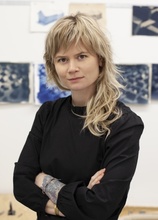
Rachel Cox (Assistant Professor, Art & Art History, CLAS)
Arts & Humanities Initiative Standard Grant
Some Women: A Photographic Inquiry into Infertility and Reproduction
Over the past two years, Cox has been creating photographic works documenting her experiences with infertility and In Vitro Fertilization (IVF). These image-based works use medical technologies such as microscope views and ultrasounds, documentary images of self and partnered administered hormone injections, as well as more expressive works which contemplate the complex relationships between agency and the power to control the creation of life. The need for Assisted Reproductive Technologies (ART) is vast within the United States. Yet, In the visual arts there are currently few creative projects which examine, confront, and share narratives associated with infertility, loss, and ART treatments. This would be the first visual arts project of its kind to thoroughly share, through images and text, a first-hand account with IVF and loss.
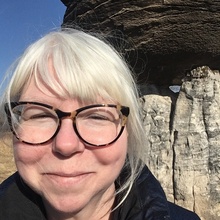
Margaret Beck (Professor, Anthropology, CLAS)
Arts & Humanities Initiative Standard Grant
Red Ceramics and the Social Worlds of Mississippian Potters
Cahokia, a large urban center in the Middle Mississippi Valley, grew to over 15,000 people in the 11th century through significant immigration from multiple neighboring areas. In this project, Beck explores social interactions within Cahokia and between Cahokia and neighboring sites during the AD 1000-1200 period, focusing on interacting groups of potters through their choice of raw materials. This project helps to reconstruct nonindustrial technologies, including resource knowledge once important for craftspeople in the Indigenous Midwest. It should also yield information about the broader social and economic contexts in which potters lived and worked at Cahokia and neighboring sites.

Thomas Oates (Associate Professor, American Studies and Journalism & Mass Communication, CLAS)
Arts & Humanities Initiative Major Conference Grant
Sports, Power and Resistance: Legacies and Futures
This grant supports the expansion of participants for the Obermann Arts & Humanities Symposium “Sports, Power and Resistance: Legacies and Futures,” scheduled for September 21-23, 2023. The planned symposium and edited collection address an urgent cultural issue. It has become impossible to ignore the significance of politics in commercialized sports. Team owners, league executives, and elected politicians have used the power of leagues and franchises to promote political views, while players and fans have sometimes used the stage that sports provides to oppose the status quo in and beyond sports. The goal of this project is to forge connections with humanities scholars studying sports, power and resistance across the Big Ten and at other peer institutions in the Midwest.
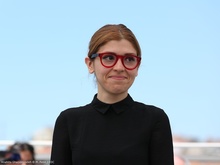
Anahita Ghazvinizadeh (Assistant Professor, Cinematic Arts, CLAS)
Arts & Humanities Initiative Standard Grant
SOJOURNER, a feature film
SOJOURNER is an in-progress narrative feature-length film. It tells the story of the arrival of a Middle-Eastern refugee woman at a small American Midwestern town. Myriam is a thirty-year-old refugee who has lost her family due to war and violence. After a few years of getting stuck at camps, she finally arrives at her new American home, where our story begins. The film follows Myriam as she carries a hidden trauma within her throughout her daily struggles. One goal of this project is to raise awareness around the refugee crisis, and specifically shed light on the economic and cultural discrimination and exploitation that refugee women experience; a serious issue that can be more effectively told with the language of story-telling.
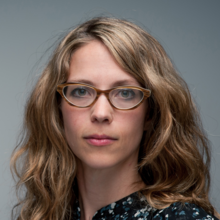
Allison Rowe (Clinical Assistant Professor, Teaching & Learning, College of Education)
Arts & Humanities Initiative Standard Grant
Just Crushing: A Demolition Derby
Just Crushing is an artwork taking the form of a demolition derby to embody American political discourse as a spectacle of competitive wreckage. Drawing upon the theatrics of Carnivale, the hometown grandiosity of state fairs, and the rich history of destructive art, vehicles representing critical issues in American politics will brutalize one another as the crowd cheers and jeers them on. Just Crushing will generate a distinct opportunity for intergenerational dialog about difficult topics and cut against the divisive, online political arguments teenagers are inundated with by replacing them with open discussion infused with ambiguity, and contradiction. Educators involved in the camp will gain experience in navigating fraught conversations, thereby improving their ability to contend with these topics in their future classrooms. Finally, the derby will establish a different kind of space for democratic exchange, one that has no stakes other than its own absurd logic.
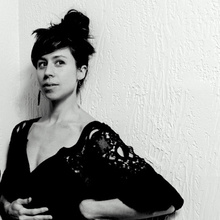
Stephanie Miracle (Assistant Professor, Dance, CLAS)
Arts & Humanities Initiative Standard Grant
Alivenesses – vibrant body listening and other corporeal interventions with(in) natural history museums
Alivenesses is creative research that seeks to answer this question through a collaborative, interdisciplinary creative “listening” process conducted while in residence at UI Museum of Natural History Bird and Iowa Halls. The results of this research will yield a series of live performances and installations for natural history museums that engage the wider public in new, playful polyphonic ways of engaging with these spaces and the materials and histories within them. This project proposes to challenge both the traditional proscenium dance, cinema, and classical music viewing experience and the traditionally vertical museum-going experience, highlighting the potential of museums to become spaces for interdisciplinary creative reimagining through a series of free-to-the-public sound and video installations, performance interventions, and guided tours use the choreographic methodology of vibrant body listening to highlight unnoticed aliveness.

Tara Bynum (Assistant Professor, English & African American Studies, CLAS)
Arts & Humanities Initiative Standard Grant
Six Degrees of Phillis Wheatley
If you Google “Phillis Wheatley,” her silhouette is easy to find. The widely-reproduced engraving (1773) remembers the young (and at times, enslaved) poet by herself and with pen-in-hand. It memorializes the writer at her craft, and it also fixes a lone, singular Wheatley in time. Despite how her body is etched, Wheatley is not actually alone. She is, in fact, part of various communities, and she speaks of them often enough in her letters. Six Degrees of Phillis Wheatley, a book-in-progress, pursues these communities and Wheatley’s particular relationships with other enslaved and recently freed people as they live through the Revolutionary War. This is a story about a community of friends who buy Wheatley’s book of poems, who live through a war, and who will have to mourn various kinds of loss as the nation is founded.
March 2022 Arts & Humanities Initiative (AHI) Awardees
About the Arts & Humanities Initiative (AHI) Program
The Office of the Vice President for Research is proud to present the March 2022 Arts & Humanities Initiative's (AHI) Program Awardees:
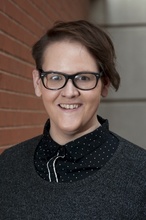
E Cram, Assistant Professor, Departments of Communication Studies and Gender, Women's & Sexuality Studies
Arts & Humanities Initiative Standard Grant
Disability Ecologies of Care and Memory
This AHI project will examine the collaborative community process of restoring the Johnson County Historic Poor Farm (JCHPF), an Iowa public historical site, and how this process reframes discussions of relationships between disability and environmentalism. The grant will provide funding for transcribing interviews that will be included in a public podcast, Disability Ecologies, and form the basis of a scholarly article and eventual book. AHI funding would cover extensive costs required to transcribe and produce interviews for the podcast and to gather written material necessary for generating scholarly publications. Interview transcripts will be donated to the Johnson County Historic Society.
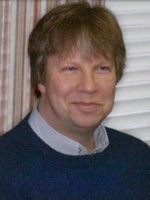
Corey Creekmur, Associate Professor, Department of Cinematic Arts
Arts & Humanities Initiative Standard Grant
Anatomy of the American Comic Book
Entitled An Anatomy of the American Comic Book, this project will analyze the historical evolution and cultural significance of each of the component parts of this familiar yet easily overlooked object, ranging from eye-catching covers to advertisements and letter columns to changes in paper quality and color printing.
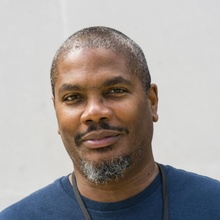
Christopher Harris, Professor, Department of Cinematic Arts
Arts & Humanities Initiative Major Conference Grant
Contemporary Afro-Brazilian Cinema Symposium
This symposium is aimed at the generation of new knowledge regarding the central question of how Black identity is figured in the new Afro-Brazilian cinema and how it resonates with Black cinema globally.

Luis Martin-Estudillo, Professor, Department of Spanish and Portuguese
Arts & Humanities Initiative Standard Grant
Questioning Monuments: Cervantes, Goya and Beyond
Martin-Estudillo’s book in progress, Questioning Monuments: Cervantes, Goya and Beyond, aims to reconstruct a critical tradition of thought and practice on the nature and function of public art which originated in early modern Spain, at the height of its empire.
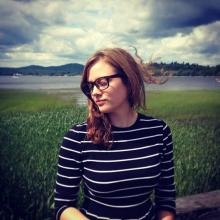
Julia Anna Morrison, Lecturer, Department of Cinematic Arts
Arts & Humanities Standard Grant
Moon Charger
Morrison’s creative research proposal is a feature-length screenplay exploring sisterhood, mental illness, and the relationship between writing and parenthood with the added socioeconomic pressures faced by single mothers.
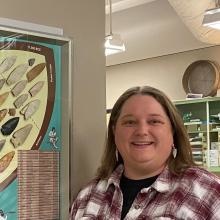
Veronica Mraz, Research Specialist, Office of the State Archaeologist
Arts & Humanities Standard Grant
Use-wear analysis on precontact stone tools recovered from three archaeological sites to discover daily lifeway practices
Mraz will conduct stone tool analysis on artifacts recovered from three archaeological site excavations in Iowa. The purpose of this research is to address the question of how the tools were utilized and what they tell us about daily lifeways of precontact people.
March 2021 Arts & Humanities Initiative (AHI) Awardees
About the Arts & Humanities Initiative (AHI) Program
The Office of the Vice President for Research is proud to present the March 2021 Arts & Humanities Initiatives (AHI) Program Awardees:
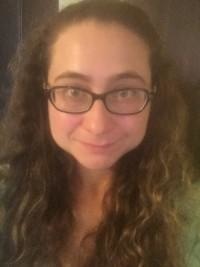
Roxanna Curto, Associate Professor, Departments of French and Italian, Spanish and Portuguese
Arts & Humanities Initiative Standard Grant
The Female Athletic Body in the Writings of Suzanne Lenglen and Simone De Beauvoir
An AHI Standard Grant would facilitate the completion of my current book project, Writing Sport: The Stylistics and Politics of Athletic Movement in French and Francophone Literature, which examines aspects of physical culture—such as exercise and sports—in 20th and 21st-Century literature from Europe, Africa and North America, including texts about the Olympic games, tennis, the Tour de France, hockey in Canada, Senegalese wrestling, and soccer. It is the first comprehensive critical study of the representation of sport and physical culture in literature from the French-speaking world. Although I have written approximately half of the manuscript, I will need to travel in order to finish it, especially with regard to Chapter Three, “Serving like a Girl: Tennis and the Politics of Gender in the Writings of Suzanne Lenglen,” and Chapter Four, “Hiking as Physical Existentialism in Simone De Beauvoir.” Funds from an AHI award would provide me with the opportunity to conduct a one-month trip to England and France in late December 2021 and early January 2022, in order to further my research on these chapters by visiting key sites, museums and archives. During the first part of my trip, I would spend two weeks consulting archives on Lenglen in the Wimbledon Lawn Tennis Museum and Kenneth Ritchie Wimbledon Library outside of London. I would then go to Paris where I would continue my study of Lenglen by visiting the Tenniseum at Roland Garros (site of the French Open), which focuses on the history of tennis in France, as well as the École Normale Supérieure to further my research on De Beauvoir. For the last part of my trip, I plan to travel by train to spend a week in Marseille, where De Beauvoir held her first teaching position after graduating from the ENS. During my time in Marseille, I would retrace all of the steps that De Beauvoir describes in her memoirs in order to gain insight into her thoughts, as well as try to find and document photographically some of the locations on her hikes that she mentions specifically.
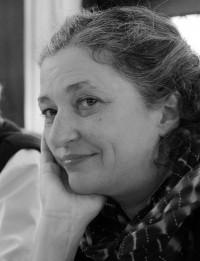
Sabine Gölz, Associate Professor, Department of German
Arts & Humanities Initiative Standard Grant
Gypsy Vengerka
Prof. Gölz will use AHI funding to defray travel and living expenses for herself and her crew to film four concluding interviews for her new documentary film titled "Gypsy Vengerka." The film tells the story of two Russian Romani guitarists who are the last carriers of a guitar tradition that reaches back to the 19th century, was transmitted orally through two centuries, and now faces extinction. The title alludes to the musical piece central to their repertoire. Based on footage collected over two decades, the film portrays the musicians from a personal and human perspective, and explores what makes their exciting music so unique. It also addresses the discrimination that the Romani people (often mislabeled "Gypsies") have faced throughout their long history. Originally from India, they first appeared in Europe in the Middle Ages, and almost immediately became targets to Europe’s earliest expression of racism, “anti-Gypsyism.” Their history includes 500 years of slavery in Romania -- a fact that is practically unknown -- and virulent discrimination and repression persists in many European countries to this day.
“Gypsy Vengerka” will be the first documentary in any language on the life and work of the Russian Roma. It aims to draw attention to a little understood form of racism, educate the public about it, and to present members of this group from an intimate and human perspective.
Filming will take place in Germany, Switzerland, and the US between July and September 2021. The film will be completed by the end of the year 2021, to be premiered at the University of Iowa in spring 2022. After that, submissions to film festivals internationally will begin. Given that there are very few intelligent and compelling films about the Roma, and given that discrimination against them is a burning political issue in a great many European countries, we expect that the film will achieve considerable international prominence.
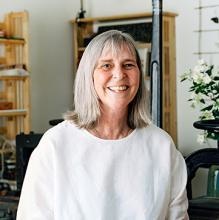
Julia Leonard, Associate Professor, UI Center for the Book
Arts & Humanities Initiative Major Project Grant
UI Center for the Book Digital Book Art Collection
The Book Art Digital Database works to describe artist books and other book art materials held in the UI Special Collections. This collections are important to scholars and artists alike not only for the narrative content, but also for the artistic characteristics, form or structure, and the materials used to the create the works. These aspects do not appear in the basic catalog information and the books and objects are held in closed stacks which makes access and knowledge of the collection difficult. This database involves examining and describing these items including a number of criteria; bibliographic, artists and other makers involved in production, materials used (handmade papers, paints, ink, etc), processes employed (papermaking, digital printing, printmaking, gold tooling...), the structure or form of the object, and finally, a brief narrative description and accompanying photographs. Much of this work is underway. We propose for this project to 1) build the search engine that will make searching accessible and wide-ranging; and a website to hold the database, a thesaurus of terms employed, essays on aspects of the book arts illustrated by materials held in the collection, and a discussion/blog post for ongoing critical dialog, and; 2)begin a collaborative effort with participating special collections libraries in which data can be shared for the books and objects held in common in both collections. Links to the UI database would be added to catalog records at participating libraries. This will result in much greater access to these remarkable materials than is currently available. Book scholars and book artists will have the means to research numerous collections and find information on the various materials as preliminary research that can be followed up by visits to the physical collections to further that research. The impact of this project will be multi-pronged, enhancing research abilities for scholars of the book arts, make available information on the collections for curators and those wanting to mount exhibits, serve as an educational and inspiring tool for artists and craftspeople engaged in these fields, and build a network with libraries across the country who have significant holdings in the book arts.
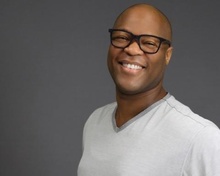
Alfred Martin, Assistant Professor, Department of Communication Studies
Arts & Humanities Initiative Standard Grant
On the Black Hand Side: Black Fandoms and Cultural Politics
On the Black Hand Side: Black Fandoms and Cultural Politics is a booklength study of Black fandoms. The book project uses 100 in-depth interviews with Black fans of a wide range of media including the Black ballerina Misty Copeland, the films The Wiz and Black Panther and The Golden Girls. On the Black Hand Side deepens my theorization of Black fandoms via what I am calling the 4 C’s of Black Fandom: Community, Comfort, Class and Cachet. Community is organized around the notion of interpretive communities, particularly in Jacqueline Bobo’s theorization of their operation among Black women. Comfort engages the idea of comfort food. On the one hand, food metaphors are often attached to television viewing; some say they have a television-watching diet or that they “binged” a series over the weekend. Other the other hand, comfort food is often described as something that engages nostalgia and sentimental affects. Class not only references socio-economic status but is also concerned with Black taste cultures. Building on Patricia A. Banks’ work about art, identity and the Black upper-middle class, I deploy her theorization of Black cultivated consumption as a kind of consumption “rooted in a desire to respond to and rectify legacies of Black marginality as well as continuing Black inequality.” Lastly, cachet refers to Black fans’ realization of Black consumer spending power as an agent of industrial change. Each axis of the 4 C’s forms the basis for one of the chapters of On the Black Hand Side. Upon completion, the book will be the first book to engage in-depth interviews with Black folks about their fannish practices.
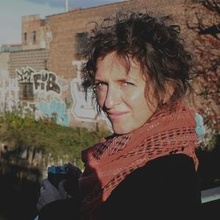
Heather Parrish, Assistant Professor, School of Art and Art History
Arts & Humanities Initiative Standard Grant
Fugitive Homing: A Collaborative Interactive Art Installation
Fugitive Homing is the current project in an ongoing art-social science collaboration between Heather Parrish, visual artist and Assistant Professor of Printmaking, and political geographer Dr. Leslie Gross-Wyrtzen entitled Working the Border. This collaboration, started in 2018, uses the languages and methodologies of visual art and critical theory to explore the politics and aesthetics of borders and boundaries. For us this means exploring the boundaries of our disciplines as well as our multiple border ontologies. In political geography, borders are not just walls or fences, but political institutions that produce inclusions and exclusions throughout social space. Visual art can complicate the perception of borders as fixed, question their function as exclusive, and expose their permeability. We are interested in how such explorations can disrupt hegemonic binaries (such as included/excluded, mobile/immobile, art/science, citizen/alien, inside/outside) and foster new imaginings of the possible. It builds on the concepts of fugitivity and sanctuary asking: How can we think about boundaries as inscribing spaces of refuge and hospitality rather than unfreedom and immobility? Fugitive Homing weaves the discursive power of critical theory together with the tools of visual art - materialized ways of imagining the other and envisioning otherwise - to invite unexpected networks of inter-connection and foster solidarity. It is an unambiguous response to the crucial nexus of crises challenging our society today. It uses the lens of border studies to meditate more broadly on traumatic forced flight, and the agential navigations necessary for a return to belonging. This project will culminate in an interactive art installation using translucent materials, video projection and sound. It will be exhibited at Yale University, hosted by Ezra Stiles College and the Urban Studies program at the Yale School of Architecture, in the Spring of 2022.
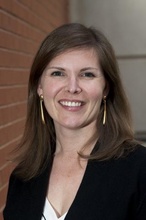
Jenna Supp-Montgomerie, Assistant Professor, Departments of Religious Studies and Communication Studies
Arts & Humanities Initiative Standard Grant
Unnatural Networks: the Satellite, the Ocean, The Data, and the Scientist That Brought the Ocean Floor Into View
This project will trace the network of relationships among the ocean, the earth, the satellite, the data, the scientists, and the mathematical manipulation that produced the first map of the ocean floor based on satellite data. These relationships illustrate nature’s participation in technological networks and, in particular, the ocean’s activity conveying and obscuring what we can know about the seafloor. We will make use of exclusive access to the personal papers of William Haxby, the creator of the first satellite map of the ocean floor, to offer a robust illustration of the continuities and disruptions that produced this watershed event in our scientific knowledge of marine geography. This project will have three outcomes: (1) an open-access website that renders these relationships in a visual, interactive form using new “story map” applications that are accessible and engaging to a wide public audience, (2) a series of public essays at popular academic blogs highlighting elements of the website to attract an international, multidisciplinary audience, and promotion of these essays through social media networks, and (3) an article for submission to a top-tier media studies journal that demonstrates how the ocean and new visualization techniques co-constituted scientific knowledge about the seafloor through relationships of connection and disconnection.
March 2020 Arts & Humanities initiative (AHI) Awardees
About the Arts & Humanities Initiative (AHI) Program
The Office of the Vice President for Research is proud to present the March 2020 Arts & Humanities Initiatives (AHI) Program Awardees:
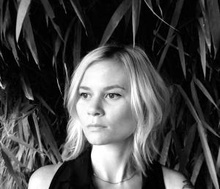
Rachel Cox, Assistant Professor, School of Art and Art History
Arts & Humanities Initiative Standard Grant
Mors Scena: Preserving Iowa's Historic Funeral Homes
This proposal will support the finalization of my photographic project, Mors Scena. This series will record historic, small-town, funeral homes across Iowa which are steadily being replaced by more technologically advanced corporate venues. Drawing from personal experiences with the funeral arrangements of family members, and research culled from the histories of modern-day funerary practices, I make photographs that not only record the historical funeral homes of the midwest, but explore cultural attitudes surrounding death.
Specifically, I focus my camera on the viewing areas, lounges, and social spaces that comprise the majority of these establishments. These are the spaces where people gather for support, grief, and healing. The relative expanse, and abundance of smaller communities, has given Iowa an extraordinary amount of historical funeral homes. The project began in August of 2018 and 17 funeral homes have been photographed to date. With AHI support, that includes a trained photographic assistant, I will photograph 24 more funeral homes over the next 12 to 18 months.
The successful completion of this series will be impactful in multiple ways. First, it will preserve the history and legacy of the funeral chapels and houses of rural towns. Secondly, as an educator and artist I am always looking to explore innovative approaches in my field. The flexible nature of how the project defines documentary photography, combined with more subjective interpretations of history, aims to encourage other artists, as well as inspire students, to pursue creative works that challenge outdated fine art photographic genre expectations. Lastly, the project has been selected by the Des Moines Art center as part of their Iowa Artist 2020 series where I will have a solo exhibition of the project at the end of the year. The Art Center curators choose artists whose creative works exemplify compelling contemporary approaches to their chosen medium. The series will be on display for nearly 3 months at a major museum, seen by hundreds of patrons daily, as well as be the content for a weekly docent tour.

John Doershuk, State Archaeologist, Office of the State Archaeologist
Major Project Grant
Origins of Ancient Village Life on the Plains of Northwest Iowa
This project seeks to contribute new understanding to a central issue in archaeology, “why did settled village life evolve?” This important cultural transformation is evident in the archaeological record from multiple places around the world, including northwest Iowa. The change occurred at different times at different places, prompting questions about the factors associated with what becomes a fundamental shift in how human groups regarded both the natural landscape and the form and structure of their communities. The transformation, from generally small-scale mobile groups to the emergence of larger settled communities, took place in northwest Iowa sometime after AD 1000. This project will analyze data recently available from an early Mill Creek culture site, 13PM7, to address the emergence of village life in the region. Available information includes copious stone, pottery, plant, and animal bone archaeological artifacts as well as feature (e.g., storage pit and hearth) data. Grant funds are requested to analyze these data and support limited field work focused on collecting landform and community layout information critical to fully understanding the contextual relationships of the artifacts and features. Extraction and geoarchaeological description of deep soil cores, UAS (drone) collection of aerial photogrammetry and thermography data, and geophysical remote sensing will cost-effectively supplement analyses of the feature and artifact data already in-hand. The measurable effectiveness of this effort will be increased communication about endangered places analogous to 13PM7 which helps minimize loss of information about the past and increase appreciation and understanding of the origins and value of cultural diversity. The direct beneficiaries of these efforts include (1) the people of Iowa who depend on OSA to discover, document, and disseminate significant information about Iowa’s past; (2) American Indian descendants of the Mill Creek archaeological cultural tradition whose ancestors created and lived at 13PM7 and related sites in northwest Iowa and who today consider these areas part of their traditional homeland; and (3) the general public who benefit from contributions to the greater humanities knowledge base and specifically from better understanding of the cultural processes involved in the major societal shift toward village life that eventually came to dominate world-wide.

Timothy Havens, Professor, Departments of Communication Studies and African American Studies
Major Conference Grant
“Behind the S(cr)een: African Americans in the Entertainment Industries”
“Behind the S(cr)een: African Americans in the Entertainment Industries” is currently scheduled for April 1-3, 2021. The conference brings together Black Hollywood creative workers, especially those working behind the scenes, and scholars who study racial diversity in Hollywood television and film. We already have a $30,000 budget from the Obermann Center, and are seeking AHI Funding to help cover the remainder of the cost of the conference.
Once seen in simplistic terms as a force that steamrolled creativity and complexity of representation, the entertainment industries have been recast in media and cultural studies as conflicted and contradictory spaces that produce and channel particular forms of creativity and diversity of representation, rather than restrict them. The big questions we seek to explore in this symposium is this: How do the demands and incentives of the contemporary entertainment industries enable and disable the employment and autonomy of creatives of color? And what can be done to diversify the workplace in Hollywood?
We expect several significant outcomes from this symposium, including:
- publishing an edited anthology/research aid for scholars and practitioners interested in diversifying Hollywood; this will be a collection of essays based on the interviews we conducted as well as full transcripts of the interviews. We would hope to place the book in the Humanities and Public Life series at Iowa University Press.
- innovating curricular developments in Cinematic Arts and Communication Studies in partnership with the Screenwriting BA in Cinematic Arts and a new undergraduate certificate in Digital Television Production in Communication Studies; these innovations would include bringing creative workers of color in to teach workshops throughout the year as well as promotional efforts to draw students of color interested in these initiatives to the University of Iowa
- using the conference as a springboard to help University of Iowa students, particularly students of color, enter the media industries
- applying for an external grant, likely a Ford Foundation Creativity and Free Expression, which has funded projects on diversity and Hollywood in the past.
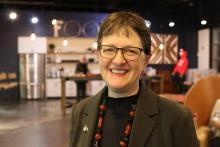
Elizabeth Heineman, Professor, Department of History
Arts & Humanities Initiative Standard Grant
Children, Transported
Between December 1938 and August 1939, 10,000 German-Jewish children sailed to Britain with the “Kindertransport,” or Children’s Transport. The immediate impetus was the “Night of Broken Glass” of November 9-10, 1938, in which Nazi agents burned synagogues, vandalized Jewish property, beat Jews, and interned 30,000 Jewish men in concentration camp. In response, Great Britain admitted Jewish children – under the condition that they leave their parents behind. Parents who never would have considered breaking up their families now took this desperate step. Few of the children saw their parents again. Two who did were my father and his brother. Far from a “happy ending,” reunion revealed that the family was irretrievably broken. Family members processed their trauma and adapted to postwar life in ways that made communication impossible. I am completing a book entitled Children, Transported, which embeds the Kindertransport experience in a multi-generation family history. The AHI will support a research trip to Jerusalem as well as a short course on Talmud study in Chicago.
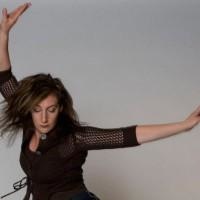
Jennifer Kayle, Associate Professor, Department of Dance
Arts & Humanities Initiative Standard Grant
Turns at the Intersection: The Power of Uncertain Routes
“Turns at the Intersection” is a creative research project resulting in an evening-length choreography. The primarily studio-based research draws on notions of feminist “intersectionality,” and urban design concepts of “shared space” to guide creative methodology; experimentation will deploy uncertainty as a tactic to heighten attention, careful listening, negotiation, and meaningful exchange, both as artistic process and product. The rotary, or traffic circle, a popular structure in “shared space,” will serve as a basis for translation and adaptation in the overall staging of the project, establishing a circular audience and performance orientation where looking, looking at our looking, and circular flow are central to the impact of the event. Examining the diverse and intersectional identities of the PI and the cast (African-American, white, male-bodied, female-bodied, queer, straight, etc.) will have central importance in the content of the work, and in the research process. At the intersection of layered identities and their social privileges or oppressions, the intersection of imposed structure and uncertainty, the intersection of audience and performer, this creative research stages some possibilities for navigating, with mutual responsiveness, the spaces where diverse bodies meet. Outcomes include an evening-length draft of the choreography, informal test performances in the 3 home cities of the artists, an international premiere in Madrid, Spain, and in phase 2, securing external funding for national/international performance. With numerous showings and performances at home and abroad, public impact will be far-reaching; by taking up issues of identity and social power alongside those of creative process and performance, the project impact contributes to both artistic and social innovation.
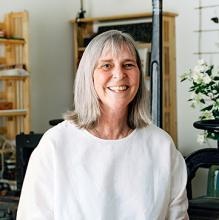
Julia Leonard, Associate Professor, Center for the Book
Arts & Humanities Standard Grant
Digital Book Art Database
The Digital Book Art Database (DBAD) describes the physical and material aspects of book art materials held in the UI Libraries Special Collections. The core of the project is a database consisting of extensive search capabilities for material aspects of the book crafts. The database is supported by a thesaurus defining search terms employed, material introducing the project and offering instruction on using the database, essays exposing users to the field of book studies/book arts, and finally, periodic blog posts written by UI faculty and students on specific pieces held in the collections. Research into the book arts and book studies is often hampered by collections with limited access (closed stacks) and basic catalog entries that are not designed to describe objects. With material book studies, the object itself and the making of that object is a primary point of research. This includes physical attributes and the materials and processes used in order to create the works in question; for example, where and when it was made, what print processes were employed (if any), what materials were used, where the book was bound and the paper made, and, the various writers, craftspeople, and artists involved in each aspect of production. The database will include and make searchable these particulars for each entry along with relevant photographs and a brief narrative of the work described. The work needed to accomplish this project will be conducted by UI Center for the Book (UICB) faculty Julia Leonard and Karen Carcia, with assistance from UICB students and colleagues and in collaboration with the UI Special Collections staff. The DBAD is an educational site and a research tool, providing in-depth descriptive material to scholars and artists engaged in book history, book studies, and book art. Bringing these materials on-line will make visible the remarkable materials held in the UI Special Collections. It highlights the book arts and related fields of study, and aims to reveal the connectivity between various publishing, art and craft activities. Those who will benefit from this resource include artist practitioners, scholars, archivists, curators, and librarians.

Thomas Oates, Associate Professor, Department of American Studies
Arts & Humanities Standard Grant
Crossover: A Cultural History of Playground Basketball
This grant would contribute to research on a book project titled Crossover: A Cultural History of Playground Basketball. The book examines how playground basketball, or “streetball” grew from a marginalized and demonized subculture to a globally recognized and commercialized sporting formation. Specifically, the grant would fund research that supports how streetball has been exhibited and taken up in European contexts.
I propose a research trip to two sites in Northern Europe where streetball is performed. Antwerp, Belgium hosts a major annual streetball-inspired tournament in late June. In Copenhagen, Denmark, playground basketball has been uniquely deployed to meet social challenges. The nonprofit GAME has built a “streetmekka” – a recreation sites with basketball courts, parkour courses, skate parks, and other spaces designed to facilitate recreation for urban, Danish youth and create “lasting social change through youth-led street sports and culture.” In Antwerp, I would visit the tournament site and interview the organizers, promoters, and designers about their goals and choices. In Denmark, I would interview the directors, peer educators, and users of GAME Streetmekkas, and observe how “street basket” (as it is called there) is being offered and taken up in the service of larger social goals.
This work contributes to existing scholarly literature on the commercialization of contemporary urban black masculinity in sport and beyond. My research expands the existing scholarship in three ways: (1) by explicitly linking streetball as a way to explore how the white spatial imaginary imagines and markets the iconic ghetto; (2) by exploring the transnational dimensions of the streetball; (3) and by expanding the scholarly discussion of the cultural consequences of racialized space to include sport. The result would allow a consideration of the repercussions for the politics of sport, race and space in different national/political contexts. This work would benefit scholars in a number of disciplines and fields, educators and social workers who work with urban populations, graduate and undergraduate students at the University of Iowa.
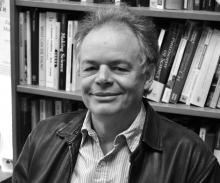
David Stern, Professor, Department of Philosophy
Arts & Humanities Standard Grant
Project to upgrade the UI Tractatus Map to include new translations of earlier drafts and diaries and show the relationship between successive drafts of Tractatus
The UI Tractatus Map, a website created by a Philosophy professor and two Philosophy graduate students in collaboration with UI Library’s Digital Studio, online since November 2016, has made a radical new version of Wittgenstein’s Tractatus, one of the great works of analytic philosophy, available to a global audience. Our work to date shows how our online map of Tractatus and Prototractatus (an early version of that book) allows access to Wittgenstein’s thought in a new way. This is because the Map enables the reader to explore the crucial role played by the book’s unique scheme of numbered and nested sections and subsections.
Thanks to a major fellowship from the NEH, tenable from June 2020 to May 2021, I will be producing the first complete and consistent translation of the book and all its German-language sources: not only Tractatus and Prototractatus, but also three wartime notebooks that are not currently part of the Map.
We are asking for funding for two major enhancements to the Map, which will enable us to include those new translations and represent the relationship between the various stages of the book’s composition in much greater detail. First, we plan to add the capacity to dynamically connect, redraw, and rearrange the current maps. This will enable us to connect comprehensively and clearly the finished Tractatus both with Prototractatus, its earlier counterpart, and their original manuscript sources. Second, we will create a new tool that charts the relationship between each sentence of Tractatus and all its sources in much greater detail. In doing so, we will achieve our long-term goal of clearly charting the genesis of Tractatus, comprehensively connecting the book with all its manuscript sources, including Prototractatus and the source notebooks. The result will be a completely new graphic version of Tractatus with far-reaching implications for the interpretation of the text, and much greater visibility for the UI Map.
March 2019 Arts & Humanities initiative (AHI) Awardees
About the Arts & Humanities Initiative (AHI) Program
The Office of the Vice President for Research is proud to present the March 2019 Arts & Humanities Initiatives (AHI) Program Awardees:
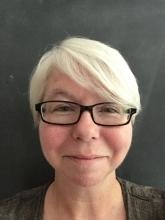
Margaret Beck, Associate Professor, Department of Anthropology
Arts & Humanities Initiative Standard Grant
Making Sacred Things: Red Pottery and Pipestone in Native North America
AHI support is requested to study red pipestone use in Native North America, focusing on the AD 1050-1200 time period in the northeastern Great Plains (northwest Iowa and southeast South Dakota). This time period is just before the earliest appearance of calumet pipes, an integral part of the calumet ceremonies that used gift exchanges and fictive adoptive rituals to establish bonds between members of different tribes. This region is near several red pipestone sources in the Plains, including the quarries at Pipestone National Monument that are still considered sacred by Sioux and other Native groups. I suggest that before pipestone was used for calumet pipes, its historical trajectory included other sacred uses in the study area. Specifically, northeastern Plains potters may have mixed powdered pipestone with water to create a red slip for some ritual ceramic vessels. In this study, I will compare the red slips on ceramics to pipestone samples to determine if potters made red slips from pipestone debris. AHI funding would enable the necessary travel (three trips) and technical analyses (chemical and petrographic data).
Red denotes the sacred over thousands of years in Native North America, beginning with red ochre and hematite use by some of the earliest residents of the Great Plains (and the continent). In the nineteenth century, red pipestone from the Plains moved all over the eastern United States as pipes used in calumet ceremonies. This project embeds red pipestone use in the larger symbolic system in the northeastern Plains from which the calumet ceremony developed, seeking to physically connect categories of red religious objects. If these data support use of pipestone debris as slip material, it would represent a dramatic research breakthrough; if not, this work will still produce publishable data on pipestone source use and the production of red slips in the study area.
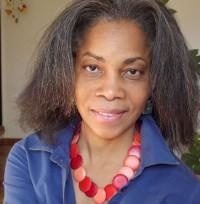
Anny Dominique Curtius, Associate Professor, Department of French and Italian
Arts & Humanities Initiative Standard Grant
Unshackling the Memory of Slavery: the Ecodialectics of Landscape and Seascape
I am applying for an AHI Standard Grant to conduct extensive research in the US, Guadeloupe and France that is crucial for the completion of my interdisciplinary book project titled, Unshackling the Memory of Slavery: the Ecodialectics of Landscape and Seascape Memorials. My book examines memorials grounded in and designed through water elements, seascape and landscape in the US, the Francophone and Anglophone Caribbean and Mauritius in the Indian Ocean. As a larger frame I also examine specific literary works because they interweave complex layers of memory, agency, and historical modalities in order to historicize and memorialize the fragmented voices of drowned African captives during the transoceanic slave trades.
In New York City, I will carry out research at the United Nations about the Ark of Return, a permanent memorial that sits on the grounds of the UN in honor of the victims of slavery and slave trades. In Guadeloupe, I will consult documents about the design of the Memorial ACTe dedicated to the history of slavery, conduct interviews with architects, and meet with archeologists and grassroots communities about a slave burial ground. The research at the Memorial to the Abolition of Slavery and the Regional Archives in Nantes, France will consist in examining archives as well as specific 18th century slave ships logbooks. At the UNESCO in Paris, I will study multimedia and public records that document the process of inscribing some of the sites I examine in my book, on the World Heritage List.
Informed by postcolonial ecocriticism, history, trauma and memory studies, post-critical museology, literary criticism, and cultural anthropology, my book ultimately argues that these multifaceted memory sites and texts which constitute intangible loci of resistance and suffering, encapsulate an entangled history, interrogate and challenge the traditional definition of memorials, museums and archives, and address the demands of diverse audiences claiming a sense of accountability.
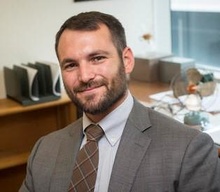
Mihailis Diamantis, Associate Professor, College of Law
Arts & Humanities Initiative Standard Grant
Collective and Individual Responsibility Attribution
Individual and corporate “people” are responsible subjects. Our committed social and legal practices treat them as though they can be responsible for the things they do. We blame and praise, punish and reward, both individuals and corporations alike. This project builds on previous work of the PI to better understand the sociopsychological mechanisms by which we judge when individuals and corporations are responsible for what they have done, and how the two mechanisms relate to one another. These mechanisms are of deep philosophical and practical interest. Philosophically, they go to the heart of our understanding of ourselves as individual agents, and the nature of our responsibility for the behavior of collective agents (corporations, nations, educational institutions, etc.) of which we are a part. Practically, they are of immediate significance for criminal law. The perennial and still unresolved challenge in corporate criminal law is to understand when a “person” (the corporation), who can act only through other people (its employees), should be held to account. Current legal doctrines are simple, but they are also misguided as measured by sound policy and what we know of how people ordinarily gauge corporate responsibility.
Utilizing survey methods and Amazon's Mechanical Turk, this project will explore the relationship between responsibility attribution and the character of the person being assessed. It will also ask how attributions of responsibility for past acts follow agents through time. Lastly, it will look to whether features of the person making the assessment, such as their socio-economic class or their personal understanding of their own responsibility, influence their responsibility attributions to others. Depending on the nature of the results, each set of surveys will provide data for a specific legal proposal or philosophical theory, published as an article in an appropriate scholarly venue.
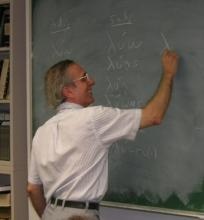
John Finamore, Professor, Department of Classics
Arts & Humanities Initiative Standard Grant
Proclus' Commentary on Plato's Republic
I am proposing in Fall 2019 to travel in October and November to the American School of Classical Studies in Athens (ASCSA) to work on two related projects: (1) to complete the second of a three-volume set of books, creating a translation (with introduction and notes) of the 5th-Century A.D. philosopher Proclus’ commentary to the Republic of Plato and (2) to gather evidence in Athens about the importance of the physical location of Proclus’ school within the city. For the translation I will be making use of the ASCSA’s excellent library, which has all the necessary books and will provide a study carrel for me. For the research into the significance of the Platonic Academy’s location in the 5th and 6th Centuries A.D., I will avail myself of the ASCSA’s assistance in gaining access to the specific sites necessary for my research: the archeological finds of the House of Proclus (in the Acropolis Museum), the remains of the 6th-Century House of Damascius (a later head of the Platonic Academy), the site and findings at the precinct of the healing god Asclepius on the hillside of the Acropolis, and the better-preserved site of the sanctuary of Asclepius in nearby Epidaurus. During my stay in Athens I expect to complete a first draft of Proclus’ essay on books 9 and 10 of Plato’s Republic (80 pages of Greek) and to write the section of the book’s introduction that deals with the religious importance of the location of Proclus’ school near the Acropolis and the healing sanctuary of Asclepius. I expect in Spring 2020 to submit the translation of Proclus’ text to Cambridge University Press, who will be publishing it, and also to present my findings about the significance of the physical location of the Academy in the 5th and 6th Centuries at the 2020 annual conference of the International Society for Neoplatonic studies.
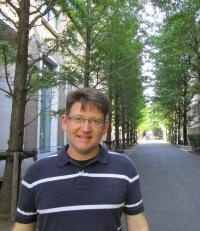
Kendall Heitzman, Assistant Professor, Department of Asian and Slavic Languages and Literatures
Arts & Humanities Initiative Standard Grant
Japanese Writers in Iowa, 1957 to 1982
I am proposing to research materials produced by and related to Japanese writers who were in residence at the University of Iowa between 1957 and 1982 as part of the International Writing Program or as affiliates of the Iowa Writers’ Workshop. I will use major archives in Japan to find materials unavailable in the United States, and I will work together with surviving writers and scholars or their families to develop a literary history of the time period and to find rare items published in small print runs, trade magazines, and other relatively inaccessible venues. This project will result in a journal article, additions to a permanent library website detailing these writers’ connections to Iowa, and additions to a collection of materials to be preserved for posterity by Special Collections in the University of Iowa Main Library.
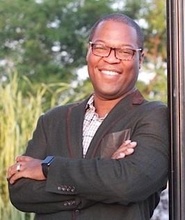
Alfred Martin, Assistant Professor, Department of Communication Studies
Arts & Humanities Initiative Standard Grant
Failing While Black
Failing While Black is a book-length study of the history of black-cast failures across film and television. Bound within both the politics and the burden of representation placed upon black media, it argues that studying media texts with primarily black casts is productive to understand the machinations of the media industries and reveal: 1) how black failures are used to “course correct” for future black-cast media production and 2) how single black media failures are used to explain Hollywood’s disengagement from producing black-cast content. In the first case, black-cast media is further refined to try to create content more in line with consumer expectations. In the second case, it leads to the assimilation of blackness into otherwise white media worlds, which has the effect of catering to white media tastes with black consumers as a tertiary market segment.
Completing the manuscript requires three phases. If awarded, an Arts and Humanities Initiative small grant will support the research phase of the project. Travel costs include spending roughly a week in each of three archives, The New York Public Library, The Motown Museum and The University of Los Angeles California film and television archives as well as conducting interviews with media industry executives (see the Project Narrative for more details). The second stage will include synthesizing the research and refining the research questions of the project. In the final phase I will write, edit and prepare the manuscript for final submission to a university press.
Failing While Black will move studies of blackness within media forward by suggesting that examining images for their “positive” or “negative” attributes is no longer enough. In order to understand black media images, we must understand the discursive strategies that undergird its production and precarity within Hollywood. By productively engaging with scholarship from media studies, communication studies, African American/Black studies media industry studies, and media reception studies, this book brings together bodies of research and moves the conversation about representation within media forward. In this way, the implications of the book are both scholarly and popular in that conversations about race and representation occur within both spheres.
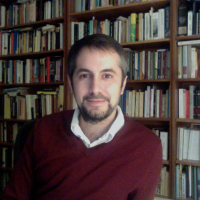
Luis Martin-Estudillo, Associate Professor, Department of Spanish and Portuguese
Arts & Humanities Initiative Standard Grant
Goya and the Mystery of Reading
Some of Francisco de Goya’s most influential artworks show very different types of readers—from aristocrats to animals—whose attitudes toward texts are often perplexing for spectators today. This project seeks to provide a historically and theoretically informed interpretation of these reading scenes, which appeared at a critical juncture in the development of Western culture. During Goya’s lifetime (1746-1828) the mutation from “intensive” to “extensive” reading practices stirred intense debates which the Spanish artist engaged creatively. An analysis of select oil paintings, drawings, engravings, lithographs and writings indicates that his interest in reading went well beyond a mere recognition of the increasing social relevance of this phenomenon. This study draws on contributions from several disciplines (including philosophy, art history, literary studies, book history, and history of medicine) to explain this abundant portion of Goya’s production. The resulting book, tentatively titled Goya and the Mystery of Reading, will also improve our understanding of how the way we encounter written and visual texts has developed since then. This project requires research at the archives of the San Fernando Royal Academy of Fine Arts in Madrid (an institution which Goya himself directed) and Spain’s National Library. I will carry out the archival research in Fall of 2019. I plan to submit a complete manuscript of about 90,000 words to a North American university press in early 2021.
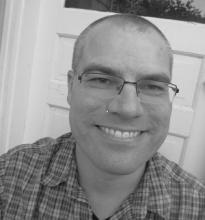
John McKerley, Research Associate, Department of UI Labor Center
Arts & Humanities Initiative Standard Grant
Indexing the Iowa Labor History Oral Project
“Indexing the Iowa Labor History Oral Project” is an effort to turn one of the University of Iowa’s most extensive, long-standing oral history projects into a unified, accessible, digital collection and to combine it with a comprehensive and fine-grained reference resource. If successful, the project is poised to make the Iowa Labor History Oral Project (ILHOP)—already a nationally recognized collection in labor and Midwestern history—into one of the most important scholarly resources in those fields. Requested funding will support a half-time graduate research assistant for the summer of 2019 to make critical contributions to this ongoing, collaborative transcription and indexing project. In 2018, the University of Iowa Labor Center won a two-year, $193,000 grant from the National Endowment for the Humanities (NEH) to transcribe and index oral history interviews from ILHOP, an over forty-year-old oral history collaboration between the Iowa labor movement, University of Iowa, and the State Historical Society of Iowa (SHSI). In accordance with the NEH grant, a vendor (Rev.com) will transcribe approximately 350 digitized and born-digital audio recordings. Concomitantly, project staff will audit, edit, and index those transcripts and integrate new transcript-level indexes into an expandable ILHOP Digital Index. The digital index will build on a 2003 published index to approximately 750 previously transcribed, analog ILHOP interviews, all of which are now digitized and accessible to the public through the UI Digital Library.
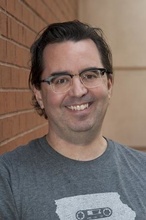
Kembrew McLeod, Professor, Department of Communication Studies
Arts & Humanities Initiative Standard Grant
A Bohemian American Family
I am requesting AHI funding to pay for transcriptions and travel to conduct oral history interviews and archival research for A Bohemian American Family: Tracing a History of Twentieth Century Underground Culture Through Twisted Familial Roots. This book project is structured around the political, cultural, and artistic activities of a single extended family throughout the twentieth century. In doing so, it doubles as a history of American countercultures during that period, and their connections to mainstream media—something that serves as the book’s central theme. As a media scholar who has written several books on a variety of subcultural groups and individuals, A Bohemian American Family will help me continue to build a body of work that examines how marginalized cultural traditions can infiltrate the cultural center. It also will challenge many assumptions within subcultural studies that view the underground and the mainstream as existing within two separate, mutually exclusive spheres (when in fact they have existed within a dialectical relationship).
A Bohemian American Family begins in New York City’s Lower East Side neighborhood during the early 1900s with a Jewish labor organizer named Abraham Rosenberg (who served as the president of the International Ladies’ Garment Workers Union from 1908 through 1914, during a time of great social upheaval), and the book concludes with the emergence of his great-grandson, Beck, the Grammy-winning alternative rock musician who rose to fame in the 1990s. Along the way, it documents Greenwich Village bohemia of the 1940s and 1950s and other New York scenes that Beck’s grandfather Al Hansen, grandmother Audrey Ostlin Hansen, and mother Bibbe Hansen were involved in during the 1950s and 1960s. This includes Beat literature, Happenings and early performance art, underground film and off-off-Broadway theater, the Fluxus art movement, and Andy Warhol’s Factory scene, to name a few. During the 1970s, the book’s focus shifts to Los Angeles, where key members of the family relocated (or were born) and also made connections with a diverse range of West Coast culture. In short, AHI funding will allow me to research and begin writing a groundbreaking book about art, commerce, and countercultures.
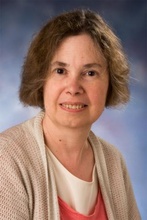
Katherine Tachau, Professor, Department of History
Arts & Humanities Major Conference Grant
Digging Without Digging: Revealing Manuscripts through Enhanced Images
My steering committee and I are proposing a five-day, interdisciplinary Workshop at the University of Iowa during Spring 2020, for students and faculty at the University of Iowa and elsewhere, to exchange collaboratively research perspectives, expertise, and actual training in the application of two digital imaging technologies – “Virtual Unwrapping” with x-ray tomography (VU) and multispectral imaging (MSI) – to the study of otherwise unreadable pre-modern manuscripts or portions of manuscripts. Initially developed for aerospace and bio-medical sciences, x-ray tomography and MSI are now being applied by cultural preservation pioneers to such material artifacts as ancient and medieval manuscripts. The promise of these technologies is to provide non-destructive means for bringing entirely new evidence to view from damaged manuscripts, but making their use widespread, effective, and safe for these cultural artifacts requires close and ongoing collaboration which we plan to accelerate at UI and elsewhere via the proposed Workshop. We are designing it for specific groups of current and future specialists who protect, provide access to, and work intimately with manuscripts: book conservators; librarians with responsibilities for ancient and medieval manuscripts or expertise in digital humanities; paleographers and codicologists; international leaders in the digital preservation of manuscripts; and computer scientists and engineers who have developed or wish to envision the leading technology and software for VU and MSI of manuscripts.
Our Steering Committee is a new collaboration between professionals in the UI Libraries and faculty in traditional humanities disciplines who have experimented with VU and MSI. We expect to raise additional funds to match AHI expenditures 2:1. By bringing together faculty, staff, and students from UI, the Big Ten Academic Alliance, Newberry Library, and elsewhere for five days, we expect to catalyze collaborative use of VU and MSI manuscript studies in the Big Ten Academic Alliance, and to position the University of Iowa as a long-term, preeminent academic source of collaborative innovation in this field.
At Workshop’s end we will solicit participant evaluations and initiate future collaboration. We plan, too, to provide resources for specialists beyond attendees, by creating and hosting as Open Access two white papers with linked videos.
March 2018 Arts & Humanities Initiative (AHI) Awardees
About the Arts & Humanities Initiative (AHI) Program
The Office of the Vice President for Research is proud to present the March 2018 Arts & Humanities Initiatives (AHI) Program Awardees:

Robert Bork, Professor, School of Art and Art History
Arts & Humanities Initiative Standard Grant
LIDAR Scanning and Analysis of Reims Cathedral
This project will involve the creation of a highly precise 3D model of Reims Cathedral, using LIDAR laser scanning technology, and the development and publication of detailed geometrical and archaeological analyses based on this model. Reims Cathedral, the coronation church of French kings, ranks as one of the most famous buildings in Europe, and it has attracted a great deal of scholarly attention, but fundamental questions about its design and its constructional history remain unresolved. Together with my doctoral student Rebecca Smith, I have been working in recent years to apply innovative tools of geometrical analysis to the cathedral, based on data that we have gathered in the field with a small laser scanner. This approach has allowed us to achieve a new understanding of the building’s overall plan, but the extension of our inquiry into a really comprehensive analysis of the cathedral’s design requires the modeling of its full 3D structure. Until recently, it would have been all but impossible to quickly develop such a model, but the spread of LIDAR technology is rapidly revolutionizing the field of archaeological and architectural surveying, making such modeling practical for the first time. In this project, therefore, I intend to travel to France with Rebecca Smith, and with Adam Skibbe, an expert on LIDAR scanning who serves on the staff of the UI Geographical and Sustainability Sciences program. In Europe, we will rendezvous with Pierre Hallot, another scanning expert who now works at the University of University of Liège, Belgium, and who formerly served as a postdoctoral research fellow at UI. Taking advantage of their expertise, and the advanced hardware that Hallot will provide, we will undertake a comprehensive LIDAR survey of Reims Cathedral, and a similar survey of Metz Cathedral, a closely related monument that deserves far more scholarly attention than it has received to date. After our team returns to the US, we will collaborate with the UI Digital Scholarship & Publishing Studio to make our digital models available to the worldwide scholarly community, while Rebecca Smith and I develop our study into a co-authored book on Reims Cathedral.

Nathan Platte, Associate Professor, Music
Arts & Humanities Initiative Standard Grant
The Sounds of Music in the Films of Robert Wise
This AHI grant will support trips to archives in California and New York to study the films of Robert Wise, a director whose films rely more on sound than sight to achieve a distinctive cinematic style. Wise is an attractive candidate for such scrutiny, as his entrée to filmmaking came through the soundtrack. In the 1930s, he edited sound effects and music for Fred Astaire and Ginger Rogers’s musicals. From there, he graduated to the role of film editor, where he assembled Orson Welles’s Citizen Kane (1941). After his directorial debut with The Curse of the Cat People (1944), Wise went on to direct some of Hollywood’s most critically and financially successful films: The Day the Earth Stood Still (1951), West Side Story (1961), The Haunting (1963), The Sound of Music (1965), and Star Trek: The Motion Picture (1979), among others. This study will explore the diverse roles sound and music play across Wise’s eclectic output, which embraces science fiction, musicals, horror, and historic epics. Wise’s films regularly illuminate social problems specific to postwar America and use the soundtrack to undermine expectations and prompt fresh reflection on issues including racial prejudice, nuclear armament, and the death penalty. The archival research conducted with this AHI grant will result in a book proposal that illuminates music and musical sound in Robert Wise’s films, thereby building upon my previous work on filmmakers who have revolutionized film through collaborations with musicians and sound technicians. Although the book proposal is the central project this AHI grant will support, the expected impact is much broader. I will also deliver at least one research presentation from this archival work at a national conference, and I plan to share some of my findings with local audiences through a film screening and discussion held at the Iowa City Public Library, where I have given a film screening-talk before. This research will also be shared in my graduate seminars on film music and American music. Undergraduate students will learn of the civic and musical impulses directing Wise’s soundtracks in an annually offered “Introduction to Film Music” course.

Kyle Rector, Assistant Professor, Computer Science, Public Digital Arts Cluster
Arts & Humanities Initiative Major Project Grant
Designing Mobile Tasks for Sighted People to Improve Art Accessibility for Visually Impaired People
People who are visually impaired have a harder time visiting art museums than people who are sighted due to inaccessible audio guides and verbal descriptions. There are accessibility guidelines from Art Beyond Sight (ABS) for how to write accessible verbal descriptions for blind people, but these solutions are costly in terms of curatorial time and are adopted in only a few museums. There is related research in Human-Computer Interaction (HCI) including creating technology-based accessible experiences for blind people, and developing mobile technologies to gather sighted people’s reactions to artwork, however there is no research at this intersection. There is a knowledge gap in how to design technology-based tasks for sighted patrons to provide accessible descriptions of artwork for blind people. Our aims to address this problem are twofold: 1) we will identify how existing research in HCI does or does not fulfill the ABS accessibility guidelines, and 2) we will develop novel tasks and identify if they help sighted people compose accessible verbal descriptions. To take a feasible first step, we will conduct online studies with sighted people instead of instrumenting an existing museum space. For Aim 1, we will create surveys based on existing HCI research and have sighted people answer questions about paintings, including “write a short phrase reflecting on the piece,” or “compose a story based off of this painting.” We will have four docents assess the statements against the ABS accessibility guidelines. For Aim 2, we will develop novel tasks and proctor similar surveys with sighted people. We will have the same docents evaluate the novel statements to see if they fulfill more of the accessibility guidelines. In addition, we will have blind people rate sighted contributions from Aims 1 and 2 based on how informative they are. Our outcomes include design guidelines for mobile tasks for sighted patrons in the museum and a technology framework. In future research, we plan to test these mobile tasks in the museum setting. We plan to publish our results to a journal or Computer Science conference and submit to external grants relating to accessible technology (e.g. NSF Cyber-Human Systems).
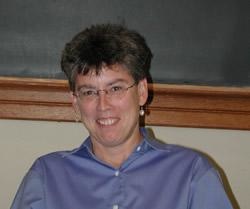
Leslie Schwalm, Professor, History
Arts & Humanities Initiative Standard Grant
Racial Knowledge: Medicine and Science in the Civil War Era
Racial Knowledge: Medicine and Science in the Civil War Era explores how northern white medical professionals used the circumstances of the Civil War to advance the notions of racial science and medicine through the examination and investigation of African American soldiers, the living and the dead. I am requesting support for a two-week research trip to the National Archives (Washington, D.C.) in June 2018. In the course of analyzing my research and drafting my book, three new questions have arisen that require additional research in order for me to fully understand the treatment of black bodies during the U.S. Civil War. During the proposed research trip, I will ascertain the military structure and context under which autopsies and burials of black soldiers occurred, questions which no other historian has asked--or answered.
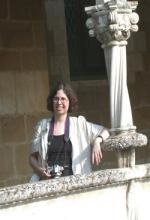
Katherine Tachau, Professor, History
Arts & Humanities Initiative Standard Grant
Experimental Use of Digital Multispectral Imaging to Read Erased Text in a Medieval Manuscript
I am seeking funding for a digital Multispectral imaging (MSI) experiment with capturing enhanced images of the final illuminated page of an early thirteenth-century parchment manuscript in Vienna (Wien ÖNB Codex 1179). The primary purpose of making images of folio 246r is to read a nearly erased dedication, which may allow me to identify which King of France was the intended recipient, and thus date the book. An expert team will perform the experiment over two work days in the manuscript collection of the Austrian National Library (ÖNB) in Vienna. The team will use a fully integrated imaging system that includes a Phase One 60 mp camera; cool, narrowband LED lighting to create an image cube from specific wavelengths along the spectrum from ultra-violet through infra-red; optical filters to capture fluorescence; and taylored software to control the camera and LED lights, and to capture, digitally process, and analyze the resulting spectral images. These will then be uploaded after the first day to the cloud for me to provide feedback from the USA while the manuscript is inaccessible overnight in Vienna, so that the team can make necessary adjustments on their second day in Vienna. If successful, this experiment will confirm or disconfirm my hypothesis from other evidence in the manuscript as to the identity of Capetian ruler depicted as its recipient. Before publishing our results in my nearly complete book manuscript, however, I plan to publish the results quickly in an article. I want thereby to encourage other Medievalists to conceive projects for which MSI could be crucial in posing and answering new questions about surviving manuscripts. Furthermore, regardless of whether words become legible, the images and their data, which we will make freely available on the internet, will contain information about the chemical composition of the materials making up this manuscript, including parchment, inks, pigments, binding agents, gesso, and gold leaf. Such data are interesting to historians and essential for conservators treating not just the Vienna codex of our experiment, but also any late medieval Parisian manuscript in any collection, including ours at the University of Iowa Libraries.
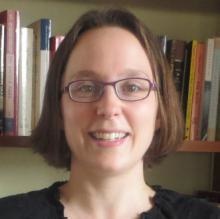
Elizabeth Yale, Lecturer, History
Arts & Humanities Initiative Standard Grant
Women's Roles in the Creation, Application, and Transmission of Astronomical and Mathematical Knowledge in Early Modern Britain
I propose to undertake archival research to study the life and work of Margaret Flamsteed (c. 1670-1730), the wife of John Flamsteed, first British Astronomer Royal at the British Royal Observatory in Greenwich, England. Before her husband’s death, Margaret Flamsteed participated in the work of the observatory and founded and administered a girls’ charity school; as a widow, she communicated science to the public by publishing her husband’s celestial atlas and preserving astronomical data collected at the Observatory during his tenure as Astronomer Royal. Given Margaret Flamsteed’s role in generating, preserving, and communicating the observatory’s data, this project offers an opportunity to explore the role that women played in developing and communicating scientific and mathematical knowledge in Enlightenment Europe. Furthermore, it allows us to explore how they deployed their knowledge in every day life and in the public interest. Margaret founded and kept accounts for the Greenwich Blue Coat Girl’s School, a charity school for young women. The school’s records illuminate how eighteenth-century women used mathematical skills to advance women’s educational and economic prospects.
This story stretches beyond the observatory itself, raising important questions about how scientific research is funded: who pays, and who owns the results? Flamsteed’s astronomical data, the foundation for navigation at sea, were critically important to British commerce and British imperial expansion, and the observatory was partly publicly funded. Yet Flamsteed paid out of pocket for his assistants’ salaries and his astronomical instruments. After his death, when Margaret departed the Observatory, she took with her the Observatory’s papers and records (valuable astronomical data), considering them her property. Why did Margaret value it, and how did she use it? How did it pass back into public hands? What can this story tell us about the role of science in public life in the eighteenth and nineteenth centuries? To address these questions, I propose to examine relevant archival records now held at Cambridge University and the UK Public Record Office. The product of this research would be disseminated in the book I am currently researching and writing on gender, science, and archives in early modern Europe.
Fall Cycle
October 2024 Arts & Humanities Initiative (AHI) Awardees
About the Arts & Humanities Initiative (AHI) Program
The Office of the Vice President for Research is proud to present the October 2024 Arts & Humanities Initiatives (AHI) Program Awardees:

Katina Lillios, Professor, Anthropology (CLAS)
Making Visible the Invisible Histories of the Nabão Valley, Portugal
AHI Major Project Grant
Lillios will lead an interdisciplinary team of students, faculty, and staff from the US and Portugal as they use remote sensing to uncover communities that lived in the Nabão Valley of central Portugal between the Neolithic (4000–3000 BCE) and medieval period (1200-1600 CE). The team will investigate Agroal, a hilltop settlement with Bronze Age (2200-1500 BCE) and medieval occupations, that Lillios had previously excavated in the 1980s. Remote sensing will help the team identify otherwise invisible architecture from the early Bronze Age and Medieval period. Architecture of the Bronze Age will help us understand how communities reorganized after a major climate event around 2200 BCE, and Medieval structures identified will clarify the function of the site and its relationship to urban centers. The team will also survey for megaliths, Neolithic burial structures, in the municipality of Ourém to develop a fuller understanding of the diverse ways Neolithic communities shaped their landscape for ritual purposes. The findings will support external funding applications and help guide local initiatives for cultural or ecological tourism.
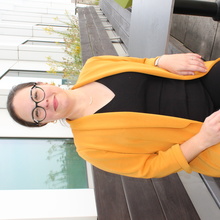
Katy Ambrose, Assistant Professor, School of Music (CLAS)
Mid-North Horn Workshop
AHI Major Conference Grant
Ambrose will spearhead the Mid-North Horn Workshop, which will take place at the UI School of Music March 14-16, 2025. This conference will invite French horn students, amateurs, and professionals from International Horn Society’s (IHS) Mid-North region to share research, perform, compete, and commune. World-class musicians will offer featured performances while students will participate in competitions and masterclasses. Professors will present research in the form of both lectures and recitals, and all attendees will have the opportunity to perform in large horn choirs. The IHS Mid-North Region, which encompasses Iowa, Illinois, Indiana, Michigan, Minnesota, North Dakota, Nebraska, South Dakota, and Wisconsin, offers few fulltime professional music opportunities scattered across a handful of symphony orchestras and military ensembles. The workshop will offer hundreds of horn players across the region access to performance and pedagogy more readily available to musicians in urban areas.
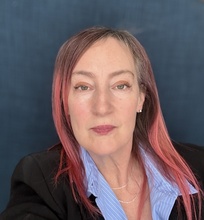
Jennifer Kayle, Professor, Dance (CLAS)
Ageing Virtuosity
AHI Standard Grant
Kayle will conduct new research as a choreographer and featured performer in a screen dance directed by Tori Lawrence, award-winning dance filmmaker. Combining two media that are unfriendly to ageing, Kayle will explore how ageing and maturity become visible (and valued) in dance and on screen. Also starring in the film will be the Arizona desert, a place where flora and fauna, like the ageing dancer, make efficient use of the available resources. In addition to showing a full version of their work at film festivals, Kayle and Lawrence will present a re-edited collage of clips through individual “viewer boxes,” each featured within a designed gallery installation. After testing choreographic methods that support all dancers who wrestle with limitations, Kayle will consider the outcomes of the project in a new scholarly article.
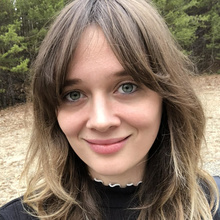
Anna Morrison, Assistant Professor of Instruction, Cinematic Arts (CLAS)
Avalanche
AHI Standard Grant
Morrison will produce Avalanche, the final short narrative film in a trilogy about madness and motherhood. She also produced the preceding films, Toothache (2023) and Mammoth (2024), with support from the University of Iowa. Film and video production faculty and graduate students will collaborate with Morrison on every stage of the production. The film follows Martha, a bereft single mother, who takes her daughter Dahlia to a cabin on strange lake, where Martha grapples with grief, single parenthood, and after an encounter with a bear, the connection between the female body and the wild. Morrison plans to screen the complete trilogy at FilmScene after completing a festival run.

Stephen Warren, Professor, History (CLAS)
Mino Bimadiziiwin: Rediscovering the Indigenous Foodways of the Great Lakes
AHI Standard Grant
Warren will explore Mino Bimadiziiwin, or “life in the fullest sense, life in the sense of longevity, health, and freedom from misfortune,” a concept intimately tied to ancestral foodways among the Anishinaabe-speaking peoples of the Great Lakes. For these Indigenous peoples, the good life is built on practices that allow humans and nature to work in cooperation, such as harvesting wild rice, tapping maple sugar trees, spearing walleye, and hunting deer. Historians, however, know little about how Native peoples understood Mino Bimadiziiwin before massive land cessions of the 1820s and 1830s. Warren will conduct archival and ethnographic research aimed at illuminating the complex food traditions of the Great Lakes Native people, and what this heritage can reveal about their worldviews and society.
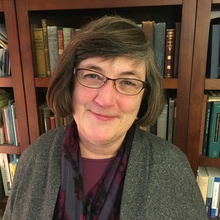
Marian Wilson Kimber, Professor, School of Music (CLAS)
Milestones of a Race and the Music of African American Progress
AHI Standard Grant
Wilson Kimber will study the musical score of Milestones of a Race, Ada Crogman’s 1920s pageant about African American history, which a cast of hundreds of people performed 35 times in 17 cities. Consisting of nine chronological tableaux accompanied by instrumental music and spirituals, the pageant educated Black participants about their legacy and fought racial prejudice by providing evidence of African American contributions to society. Wilson Kimber will conduct archival research in Kansas City and Minneapolis to compare Crogman’s musical vision to contemporary Black scholars and other pageants of the era.
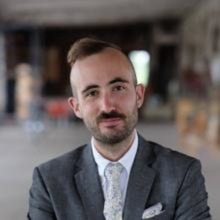
Cory Young, Assistant Professor, History, CLAS
A Just and True Return: Pennsylvania’s Surviving County Slave Registries
AHI Standard Grant
Young is collaborating with the UI Libraries’ Digital Scholarship and Publishing Studio to create a relational database and accompanying website using information about 6,300 unfree people and their enslavers. Young collected these records from 15 Pennsylvania county slave registries while researching his dissertation and current book project. In the 1780s, Pennsylvania implemented a gradual abolition law that mandated enslavers register everyone they claimed as property within six months or forfeit their claim to them. This included individuals born before the law’s passage, who could be enslaved for life, and any children they bore, who could be enslaved for 28 years. Enslavers would register multiple decades of a single family as property, perpetuating hereditary slavery in Pennsylvania into the 1820s. Young is making the first attempt to compile all surviving registrations in a single location and is also standardizing and organizing these documents.
October 2023 Arts & Humanities Initiative (AHI) Awardees
About the Arts & Humanities Initiative (AHI) Program
The Office of the Vice President for Research is proud to present the October 2023 Arts & Humanities Initiatives (AHI) Program Awardees:
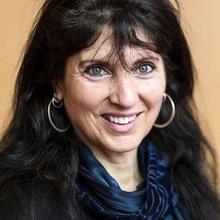
Lisa Schlesinger (Professor, Theatre Arts/Cinematic Arts, CLAS)
Arts & Humanities Initiative Standard Grant
The Iphigenia Project Three transdisciplinary operas addressing forced migration in a time of global conflict and climate crisis
Professor of Playwriting in the Department of Theatre Arts, Lisa Schlesinger is the librettist and conceptual instigator of three operas for The Iphigenia Project, a series of transdisciplinary operas written in response to the global refugee crisis. She requests funding to travel to research and attend the collaborative development, rehearsals, and the premieres of these works from November 2023 to June 2024.
The operas in production are Iphigenia Point Blank, composed by Kinan Azmeh (Syria) and Ruinous Gods: Suites for Sleeping Children, composed by Layale Chaker (Lebanon) which is co-commissioned and produced by Spoleto USA, Wuppertal Opera, Nederlandse Reisopera. The third opera, Enheduanna Rising, also composed by Layale Chaker is in the preliminary research stage.
The Iphigenia Project, begun in 2014, is a series of transdisciplinary operas, performances, and writings, conceived by the PI in response to the refugee crisis due to global conflict and climate crisis as seen through the lens of the Iphigenia myth. The project follows the plight of refugees, particularly women and children, caught in the on-going wars in the middle east, the routes they travel to escape violence, and the histories/stories they carry with them. Postponed by the shutdown of live performance during the pandemic, Iphigenia Point Blank will rehearse and premiere at the Sheen Center for Thought and Culture, accompanied by an immersive installation by Kevork Mourad (Syria) and a symposium on the crisis of forced migration. Ruinous Gods: Suites for Sleeping Children, the second opera will be in developmental workshops, rehearsals, and then premiere at the prestigious Spoleto Festival USA in May 2024, followed by a two-year international tour with the Wuppertal Opera and Nederlandse Reisopera. The PI seeks funding to research the third opera, and to be present for the developmental workshops, rehearsals, premieres, and associated community engagement of these performances. Attendance and participation in these processes is a form of research that will greatly enrich the making of Enheduanna Rising, the next opera in the series, Schlesinger's teaching practice in performing arts and social justice.
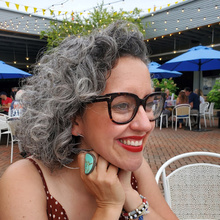
Lina-Maria Murillo (Assistant Professor, Gender, Women’s and Sexuality Studies, CLAS)
Arts & Humanities Initiative Standard Grant
Borderlands of Abortion Care: Demographic Fears, White Supremacy, and Abortion in America
Borderlands of Abortion Care: Demographic Fears, White Supremacy, and Abortion in America begins with one critical question: how is it that after the Supreme Court struck down the constitutional right to abortion in 2022, so many states have conflicting laws about the procedure? Some states like Iowa had recently argued that abortion was protected by the state’s constitution, while states like California had liberalized abortion access in the years before Roe. Meanwhile, activists in Michigan scurried to propose constitutional amendments to prevent nineteenth-century anti-abortion laws from coming into play, as other states like Texas had been slowly chipping away at abortion access for nearly a decade. How are we living in this borderland of abortion care after almost fifty years of federal protections for the procedure? Braiding major changes in reproductive rights laws and attitudes with the politics of demographic and population changes helps answer how deeply held ideals about American democracy and bodily freedoms are connected to reproductive rights. Demographic changes have, since at least the nineteenth century, produced anxieties about the racial composition of the United States that pull at cultural ideals undergirding (white) nationalism. Values uplifting hard work, responsibility, individuality, reason, respect, liberty, and righteousness have been critical ideological components of white Anglo-Saxon Christian racial formation in the US. The United States’ multiracial reality has always thwarted mythologies about a pure white Christian nation and the possibilities of a white democracy. Easy access to abortion and contraception, it is believed by some, has the potential to produce a white demographic winter. This is the fear that animates current purveyors of the “great replacement” theory and influenced past thinkers with similar leanings, such as Madison Grant, Lothrop Stoddard, and Edward A. Ross. This is a single-authored monograph examining the nearly 160-year story of reproductive control and freedom that is intimately tied to white supremacist fears of changing demographics in the United States. This study argues that over the course of three centuries, those in favor and against greater access to abortion and contraception have often tied their arguments to maintaining and defending white power structures in the US.

Kembrew McLeod (Professor, Communication Studies, CLAS)
Arts & Humanities Initiative Standard Grant
HANSEN Documentary Film
This grant will support production on my fourth documentary, HANSEN, which is about a single bohemian family that helped reshape popular culture in quiet but profound ways. After cultivating a three-decade career as one of the most respected musicians of his generation, Beck (born Bek Hansen) is certainly the most famous Hansen, but many other family members have made significant contributions in other mediums. Al Hansen, his grandfather, was a ubiquitous figure in the in the downtown New York City underground arts scenes during the postwar era, and his daughter Bibbe Hansen grew up within those worlds. Her parents instilled a passion for creativity that buoyed her well into adulthood, when Bibbe passed the creative bug down to Beck and his brother Channing Hansen, a polymath whose innovative visual art is housed in museums, galleries, and collections around the world. By tracing the journeys of Bibbe’s extraordinary family, this documentary will double as a history of the American avant-garde and the way that its influence infiltrated the mainstream during the second half of the twentieth century.
HANSEN is based on a book I am currently researching that directly builds on THE DOWNTOWN POP UNDERGROUND, my 2018 book that was supported by an individual AHI Grant and an NEH Public Scholar Award. The goal of this AHI Major Project Grant is to film several days of interviews with Bibbe, which will provide the film’s narrative spine. That story can be elaborated through interviews with Beck, Channing, and other family members, along with prominent figures who collaborated with the Hansens over the years. AHI funding will enable me to create a trailer/demo reel that is necessary to secure funding from external sources such as the NEH, NEA, PBS/ITVS, Ford Foundation, MacArthur Foundation, and the Guggenheim Memorial Foundation. As the Project Director, I have a consistent track record of using AHI seed money to follow my projects to completion by raising external funds, which will set up HANSEN for a successful film festival run and a release on a streaming service such as Netflix or a national broadcast on a network like PBS.
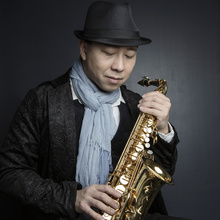
Kenneth Tse (Professor, School of Music, CLAS)
Arts & Humanities Major Project Grant
Grammy-nominated composer Lowell Liebermann Writes Major Concerto for School of Music Faculty Kenneth Tse
In a world that is increasingly drawn to technology, science, computers, AI, and all things analytical, it is good to be reminded of the influence art, music, and culture have on shaping the societies in which we live and work. Music brings together people of varied backgrounds with a common purpose of creation. It fosters cooperation, initiates dialogue, generates empathy, and causes us to reflect on ourselves in relationship to those around us. This request of funds through the AHI Major Project Grant would serve to commission a new large-scale musical composition by the world-renowned composer Lowell Liebermann – a project that would bring musical communities together globally, and one that can only be fully understood and judged in light of the history that surrounds famous composer commissions. Lowell Liebermann has agreed to compose this concerto for saxophone soloist and full orchestra. But as with any project of this nature, the time involved is substantial and the costs are high. The rewards, as seen from the popularity and success of his previous concerti for solo instruments (piano, clarinet, flute, piccolo, trumpet, cello, harp, and organ) are astounding. There is no doubt that a saxophone concerto by Liebermann would find itself drawing a widespread and enthusiastic audience in concert halls across the world and would land at the apex of concerti composed for the instrument. The impact will be measured for decades, even centuries to come. And through this grant, the University of Iowa will be forever associated with this composition.
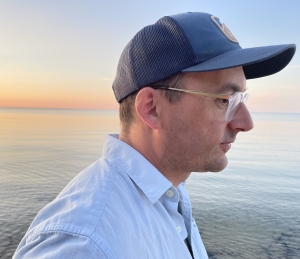
Andrew Casto (Associate Professor, Art & Art History, CLAS)
Arts & Humanities Major Conference Grant
The University of Iowa Talavera Pottery Symposium
This proposal seeks to create an international symposium celebrating the contemporaneous practice and methodology of Talavera Pottery through the lens of artistic production. Talavera is a Mexican style of white, tin-glazed pottery produced in Puebla and Tlaxcala, Mexico since the 16th century, originating in Talavera de la Reina, Spain, stemming from the ubiquity of Renaissance-era Italian Maiolica. Central to this symposium will be to examine the fully developed traits of this Mexican art form through the work of artists, in dialogue with a European Maiolica artist, and in the presence of historians and museum professionals.
This examination is needed, as Talavera has had little scholarly attention internationally due to the monopoly that corporate studios hold on production. This event seeks to examine the work of Talavera artists through observation of scholars currently researching this field, to contribute to a new understanding of the uniqueness of artists working in the Talavera field. This proposal also seeks to showcase master Talavera artists to our local ceramics and university Latinx populations. These groups are the local target audience for this event, however the event is intended to reach scholarly groups beyond the region through documentation and dissemination of this activity through social media, and through exhibition of the results of the project in the Stanley Museum of Art.
A symposium/conference is proposed in the University of Iowa Visual Arts Building, with workshops and demonstrations conducted by visiting Talavera artists from Puebla, Mexico, an Italian Maiolica artist and Maiolica historian, both from Rome, as well as a keynote address by the Curator of Decorative Arts at The Hispanic Society of America Museum and Library of New York. Work created will be displayed in the University of Iowa Stanley Museum of Art, where a digital video archive of the event will be shown in conjunction with pieces made. The project will be included in Ceramics curriculum in the semester following, and will reach some 150 students. Successful completion of this project will contribute to recognition of the relevance of Talavera Pottery to the larger ceramics discipline through the knowledge spread via these institutions.
October 2022 Arts & Humanities Initiative (AHI) Awardees
About the Arts & Humanities Initiative (AHI) Program
The Office of the Vice President for Research is proud to present the October 2022 Arts & Humanities Initiatives (AHI) Program Awardees:
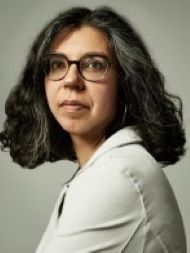
Asha Bhandary, Associate Professor, Department of Philosophy
Arts & Humanities Standard Grant
Being at home: liberal autonomy in an unjust world
Bhandary’s book in progress examines self-sovereignty, personal property and individualism—the core values of liberalism— from the evaluative subject position of a woman of color. The book ultimately advances the next stage in Bhandary’s radical liberalism, supplying grounds for a normative critique of political and interpersonal interference in minority women’s lives in the current, unjust world.
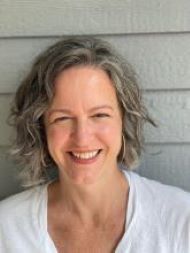
Mariola Espinosa, Associate Professor, Department of History
Arts & Humanities Standard Grant
Sensational Cures: Medicine, Politics, and Popular Culture in the Spanish-Speaking World
Espinosa’s project will result in a book exploring the relationships between medical professionals, populist leaders, and popular culture in the early 20th century. Espinosa’s research will center on a Spanish physician who captured transnational attention and the admiration of populist leaders in Spain, Italy, and Argentina.
Laurel Farrin, Professor, School of Art & Art History
Arts & Humanities Standard Grant
Weird O
Farrin’s new painting project will isolate abstract forms made from repurposed materials, combining them in ways that evoke recognition and humor by defying expectations. Repurposed materials will also be constructed into sculptural forms and used in short videos exploring how and why visual humor occurs.
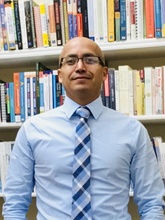
Jose Fernandez, Assistant Professor, Interdisciplinary Programs
Arts & Humanities Standard Grant
Spanish-Language Print Culture in Texas & the Intellectual Legacy of José de la Luz Sáenz, Alonso Perales, and Américo Paredes
Fernandez will conduct archival research on newspaper articles by three major Latinx writers of the twentieth century—José de la Luz Sáenz, Alonso Perales, and Américo Paredes. Fernandez will examine the links between the books published by these authors and their articles in Spanish-language newspapers in Texas as part of his second book project tentatively titled The Modes of Latinx Literary Production.
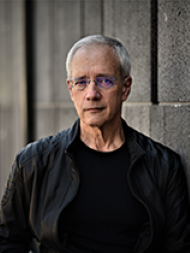
David Gompper, Professor, School of Music
Arts & Humanities Major Project Grant
Contemporary Music from Israel: A festival of music by living Israeli composers
The School of Music will host a seven-day, nine-concert festival from April 17-23, 2023, featuring the works of present-day Israeli composers in collaboration with the Jerusalem Academy of Music and Dance (JAMD). The Meitar Ensemble, comprising eight professional musicians associated with JAMD, will serve as the core group for all instructional interactions and concert performances, and Meitar director Amit Dolberg will serve as the festival’s keynote speaker. Learn more about the festival here.
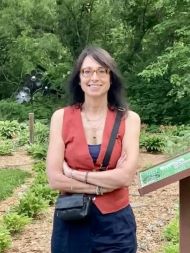
Kathy Lavezzo, Professor, Department of English
Arts & Humanities Standard Grant
Bad Medievalism
Lavezzo’s book, Bad Medievalism, under advance contract to Fordham University Press, charts the awkward, disturbing, and depressing links between the medieval period and modernity, particularly with respect to racial discourse. The book calls attention to how arguably the worst components of modernity—racism and racialization—possess medieval roots. The book recovers underappreciated medievalisms of Black writers including novelists Gloria Naylor and Paule Marshall and cultural studies pioneer Stuart Hall.
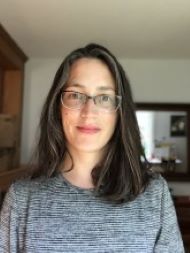
Louise Seamster, Assistant Professor, Departments of Sociology & Criminology and African American Studies
Arts & Humanities Major Project Grant
From Data Access to Data Justice: the Flint Water Disaster Public Document Archive
Seamster’s project will create an interactive, public digital archive of 455,000 pages of government emails relating to the Flint Water Crisis released in 2016 by Michigan’s then-governor Rick Snyder. The website, to be built in collaboration with students and the UI Libraries’ Digital Scholarship and Publishing Studio, will use digital humanities approaches to data cleaning and analysis to increase archival analysis and interactivity. The project will complement Seamster’s book manuscript on the political context of the Flint Crisis, which is expected to publish in Spring 2024.
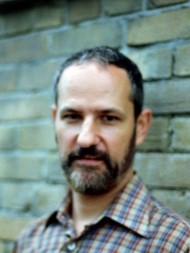
Stephen Voyce, Associate Professor, Department of English
Arts & Humanities Standard Grant
Dark Worlds: Culture, War, and the National Security State
Voyce’s book-in-progress addresses how artists, writers, and filmmakers engage with the clandestine activities of national security actors, helping their audience to see a highly regulated but incredibly secretive form of warfare. Voyce draws on an international group of makers to understand the changing natures of war and global security today.
October 2021 Arts & Humanities Initiative (AHI) Awardees
About the Arts & Humanities Initiative (AHI) Program
The Office of the Vice President for Research is proud to present the October 2021 Arts & Humanities Initiatives (AHI) Program Awardees:
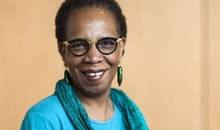
Loyce Arthur, Associate Professor, Department of Theatre Arts
Arts & Humanities Initiative Standard Grant
Art and Conversation
I am applying for a standard AHI grant with the goal of expanding the reach of the Oracles Mural project to the Iowa City community through an art installation, community dialogues and workshops. It is vitally important that the call to action, “a mural is not enough,” posed by the mural artists is maintained and adds value to life in the City, in the present and future. I see the proposed activities as the beginning of a sustainable course of action that can be implemented in the community, year after year, changing in response to growth and change in Iowa City.
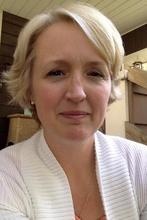
Lori Branch, Associate Professor, Department of English
Arts & Humanities Initiative Standard Grant
Postsecular Reason
This AHI proposal requests support for the travel portion of the CDA I have been awarded for the fall of 2021. This travel funding will enable me to spend 4 weeks in residence in the UK (November 21-December 18, 2021), workshopping my 4-chapter book manuscript, Postsecular Reason, with world-renowned specialists in the field of literature, religion and postsecular studies at Lancaster University, including my regular NEH collaborator Professor Mark Knight, and revising the project per our conversations to maximize its scope and impact.
Postsecular Reason synthesizes wide-ranging scholarship that critiques both religion and secularism and the ways we have come to understand them in modernity. It builds on these studies to mount a cross-disciplinary case for conducting scholarly work in the arts, humanities, and social sciences in postsecular ways – for thinking beyond a reductive, binary opposition of secularism-vs-religion.

Monica Correia, Professor, 3D Design Program
Arts & Humanities Initiative Standard Grant
Creating Design with Upholstery Fabric and Machines
This project proposes the creation of designs that combine traditional sewing techniques with Computer Aided Design (CAD) and Computer Numerical Control (CNC) technologies. I have been working with CAD and CNC for the last 25 years, but this is the first time that I introduce sewing in my design work.
Last Summer, I designed a set that includes a tridimensional wall piece, a seat and a light fixture. I am driving inspiration from embroidery and sewing techniques passed on to me, and by embroidery samples created by my mother to create this work. Moreover, I plan to review the 3D Design curriculum to include sewing techniques that I am mastering with this project. This will have a significant impact on the undergraduate and graduate 3D Design curriculum and on students’ ability of creating portfolios for job and graduate school applications.
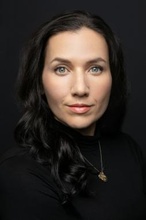
Melissa Febos, Associate Professor, Department of English
Arts & Humanities Initiative Standard Grant
The Dry Season
The Dry Season is a creative nonfiction project driven by the central question of how celibacy has been an integral part of female liberation throughout history, and more broadly, how personal practices of divestment from oppressive systems is key to their disruption. It delves into the lives and work of celibate women who transcended the social laws of their times and found ways of self-actualizing when it was forbidden, either by law or social convention. In a book-length essay that combines personal narrative with intertextual research, it investigates how the Christian mystics predate the Shakers, what the Vestal Virgins had in common with the Dahomey Amazons, how the European beguines relate to second-wave radical feminists in the United States, and how the author’s own experience is the inheritance of all these.
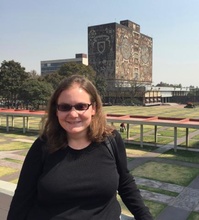
Lisa Gardinier, Curator, International Literature
Arts & Humanities Initiative Standard Grant
55 Years of International Literature at the Writing University: A Bibliography of Iowa's Presence in Literary Works
This project aims to identify literary works that were either 1) developed or produced during the author's time in the International Writing Program residency at the University of Iowa or 2) written about Iowa, whether in fiction, poetry, or non-fiction. The resulting bibliography will be incorporated into an upcoming exhibition at the UI Libraries' Main Gallery in fall 2022 via its online presence.
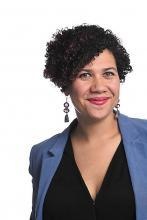
Ashley Howard, Assistant Professor, Departments of History and African American Studies
Arts & Humanities Initiative Major Project Grant
Civil Rights and Racial Justice: A Tour of the South
Civil Rights and Racial Justice: A Tour of the South is a new program for students and community members centered on a two-week tour of southern Civil Rights sites, museums, and memorials. At each site, we consult with historians, museum curators, interpreters, and participant-observers who will draw on their humanities expertise to engage with the tour participants. A new spring course (HIST:3257) prepares participants prior to the tour. Participants are also encouraged to enroll in a separate, four-week (3 credit hour) internship at the conclusion of the tour at the Civil Rights Heritage Center in South Bend. During the internship, students will participate in several community-engaged, restorative justice projects developed by Center Director, Assistant Professor Darryl Heller. In the fall, practicum participants will attend 2 workshops to reflect on their experience through collaborative humanities-based activities, including podcasts, videos, op-eds, blogs, and posters. Following those workshops, we will hold an open-community forum at the Iowa City Public Library where tour participants—community members, students, and faculty--will share their reflections and engage with community members in a discussion about social justice activism in the past and the present, in the South and in the Midwest.
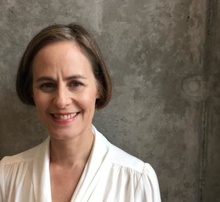
Rebekah Kowal, Professor and Chair, Department of Dance
Arts & Humanities Initiative Standard Grant
War Theatre: Dancing American Citizenship and Empire during World War II
Think of entertainment for American soldiers during WWII and United Service Organization Camp Show tours readily come to mind. According to USO.org: “By V-E day, the USO was putting on 700 shows per day all around the world and, by the end of the war, had sent over 7,300 entertainers overseas to perform for the troops.” These productions “brought America” to men and women fighting far from home, easing the strain of war. Study of performance during WWII has been dominated by narratives of USO-sponsored entertainments, even as these accounts are becoming more nuanced with respect to intersectional issues of class, race, gender, sexuality, and nationality. War Theatre: Dancing American Citizenship and Empire during World War II, complicates this picture by considering what we have yet to know and understand about the roles that movement practices, including dance, played in the project of American imperialism. My body of scholarly work stems from rigorous archival research that puts dance and embodied forms of knowledge in dialog with disciplines across the humanities and social sciences. Adding the knowledge about the ways the U.S. pursued cultural and territorial expansion via its global and domestic military presence during WWII, War Theatre investigates how embodied practices of war furthered American geo-political objectives both as staged intercultural encounters and as visual forms of discourse that the government produced and managed through the Office of War Information as wartime propaganda.
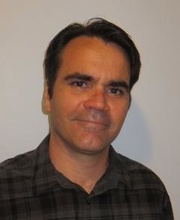
Daniel Miller, Associate Professor, Sculpture & Intermedia Program
Arts & Humanities Initiative Standard Grant
Mutual Light
Mutual Light is a proposed interactive light art installation by Associate Professor Daniel Miller, where large illuminated artificial flower forms have the ability to interact with the viewers, exploring human social interaction and biosignatures. The changes in visitors body heat and proximity to the light sculptures will cause the flowers to animate with light through temporal and color changes. In the center of each illuminated flower structure, infrared thermometers will take readings of the invisible heat signature of a participant. At the same time the "robo-flora" will precisely read the visitors distance to each flower with Lidar sensors. The use of multiple flower structures will allow the project to interact with participants in a larger public space to create an immersive light experience.
There are a number of parallel concepts being investigated in this art installation. While conceptually this project is looking at biomimicry using a robotic light system. This electronic art installation is also responding to the realities of living in a world with Covid-19, where temperature checks and social distancing are now commonplace. Additionally, there is a darker side to this project, where the discussion can lead to implications of digital surveillance of our personal bio signatures through governmental use of sensors and data. Another thread being explored in this project is human impact on ecosystems through global warming and the increased heat we generate from CO2 production. Here humans IR heat signature represents their contribution to a warmer world.
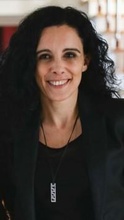
Ana Rodriguez Rodriguez, Associate Professor, Department of Spanish and Portuguese
Arts & Humanities Initiative Standard Grant
Re-Encountering Islam in the Philippines: Race and Religion at the Threshold of Spain's Modernity
An AHI Standard Grant will facilitate the completion of my current book project, Further Moors: Muslim-Christian Encounters on the Edges of the Spanish Empire (1565-1898), which I plan to finish by fall of 2022. This monograph analyzes Spanish contacts with Islam in the Philippines during the three centuries when Spain ruled the archipelago, and its impact on the perceptions and representations of racial and religious difference in the Spanish empire. Muslim-Christian contact in the Philippines extended from the 16th century until 1898, and it was a complex process which simultaneously reflected and transformed Spain’s views of Islam.
October 2020 Arts & Humanities Initiative (AHI) Awardees
About the Arts & Humanities Initiative (AHI) Program
The Office of the Vice President for Research is proud to present the October 2020 Arts & Humanities Initiatives (AHI) Program Awardees:

Eloy Barragán, Associate Professor, Department of Dance
Arts & Humanities Initiative Standard Grant
UNIONES - On the Stage, On the Street, On the Screen
Dance companies were unprepared to pivot their presentations when COVID-19 closed theaters worldwide. The closure of performance venues had a devastating impact on dance makers, who typically create with performance spaces in mind. Barragán would use the Arts and Humanities Initiative (AHI) Grant to develop a choreographic method teaching students to pivot across and design dance-making for three platforms simultaneously: the proscenium stage, specific sites, and virtual platforms. With the support of the AHI Grant and in collaboration with the National School of Classical Ballet and Contemporary Dance (ENDCC) in Mexico City, Barragán will produce an interpretation of Les Noces (Marriage), titled UNIONES, set to Stravinsky’s score. This interdisciplinary, collaborative project between the ENDCC screen-dance program and the classical/contemporary training programs will be performed on the stage at the Raul Flores Canelo Theater, on the street with Dance Investigation Center Outdoor Theater, and on the screen with Dance Investigation Center Cinema Theater. With this experience, Barragán will create curriculum for Choreography III and IV at the University of Iowa, and re-stage UNIONES in 2022 with the UI School of Music and/or Cedar Rapids Opera Theater.
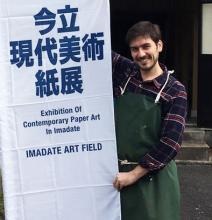
Nicholas Cladis, Lecturer, Center for the Book
Arts & Humanities Major Project Grant
Artisans and Artists in a Traditional Japanese Papermaking Village
Artisans and Artists in a Traditional Japanese Papermaking Village proposes that a collaborative research team comprising the University of Iowa Center for the Book’s (UICB) papermaking specialist (myself) and five graduate research associates be given an opportunity to travel to Japan to learn from artisans making traditional Japanese handmade paper. Selected researchers will spend two weeks in the Echizen papermaking region of Japan, making paper alongside papermaking families while immersed in Japanese craft traditions. Researchers will be able to investigate how these families earn their livelihood from traditional papermaking, while also learning the history of the craft in its place of origin. This project will culminate in a village-wide exhibition of team members’ artwork made in the village and will then continue after they return to the United States through demonstrations, dialogue with artisans, and professional documentation and archiving of activities. The result of this will be a major boon to the UICB by generating a vibrant international presence for the center while establishing it as a leader in Japanese papermaking and solidifying it as a valuable and international asset to the fine arts and book conservation fields. The purpose of this project is threefold. First, it will cement a formal relationship between the Echizen papermaking village in Japan and the UICB, while also seeding a dialogue between these two communities that will benefit the UICB on a department-wide basis. Concurrently, it will give the UICB unique exposure to the lives and work of Japanese papermaking artisans by providing crucial educational and scholarly insight into the economics of craftsmanship. Finally, this project will give the UICB a long-standing connection and forum to share and exhibit faculty and student work internationally.

Gregory Hand, Associate Professor, School of Music
Arts and Humanities Initiative Major Conference Grant
Diversity in Sound: the Klais Organ at the University of Iowa
“Diversity in Sound: the Klais organ at the University of Iowa” is tentatively scheduled for late Fall 2021. This conference will bring together organ professors, graduate students, church musicians and performers to examine the vastly underreported influence of the Southern German organ on the development of organ literature and organ building. We already have a $20,000 budget from an internal endowed fund and are seeking AHI Funding to help cover the honoraria and travel portions of the main presenters, which will greatly increase the scope and reach of the conference. The Klais organ at the University of Iowa is the first modern organ in the United States to be built patterned after historic Southern German organs. A series of lectures, masterclasses, video presentations of historic organs, and recitals will demonstrate the exceptionally wide amount of organ literature that the Southern Germany-influenced Klais organ can perform in a historic and convincing way. We also will explore the complicated question of why pedagogical methods and current research has consistently prioritized the influence the North German Baroque organ and the 19th-century French Romantic organ at the expense of the Southern German organ. We will also propose ways that this organ type can be integrated into future pedagogical methods. We expect several important outcomes from this conference, including: 1) Public masterclasses and recitals to be live streamed and archived for long-term dissemination 2) Building a publicly available repository of audio and video demonstrations of organs built in the Southern German style, all subtitled in English to ensure widest distribution 3) Establishing the University of Iowa as a national research center on this innovative way of understanding organ literature.
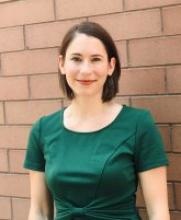
Anabel Maler, Assistant Professor, School of Music
Arts and Humanities Initiative Standard Grant
Seeing Voices: Analyzing Sign Language Music
The proposed monograph, entitled Seeing Voices: Analyzing Sign Language Music, contextualizes recent musical practices in Deaf culture within the history of deafness and deaf education in America, and proposes a methodology for engaging analytically with the musical products of Deaf culture, in the form of musical works created and performed in sign language. The project’s aim is to bring the long and rich history of sign language music to the attention of music theorists, to engage with it seriously and thoughtfully as a musical art, to understand what elements of music are resilient across modalities, and to grapple with the methodological quandaries that signed music raises for the discipline of music theory. In redefining music as movement, the book argues that sign language music, rather than being marginal or extraneous to histories and theories of music, is in fact central and crucial to our understanding of all musical expression and experience. It argues, above all, for the resilience of music in the face of enormous obstacles. This book will provide a thorough grounding in the history and analysis of signed music for undergraduate students and will thus be of interest for classes in ethnomusicology and historical musicology as well. Seeing Voices will also interest a scholarly audience in the humanities and is aimed at scholars in music theory and musicology. Owing to the interdisciplinary scope and methods of this research, different chapters will engage readers from a range of disciplines and fields in addition to music theory and musicology including ethnomusicology, disability studies, Deaf studies, American studies, and voice studies.

Courtney Miller, Assistant Professor, School of Music
Arts and Humanities Initiative Standard Grant
Reclaiming Performance: Composition, Creation, and Collaboration through Covid-19
The field of music has been hit especially hard by Covid-19. The pandemic has led to extreme financial and emotional hardship for many musicians worldwide. The inability to perform and share music with others in person is leaving a heavy mark on classical music. This project provides an opportunity for young composers from around the world who are facing adverse circumstances in the time of Covid-19 to share their unique perspective through musical composition. The first step involves identifying composers under the age of 30 from each of the six inhabited continents. Other criteria considered will be the quality of their work and their interest in collaboration. During difficult times, the need for musical expression is all the more necessary. This project will allow each composer to share their journey through the lens of music, and more specifically the oboe. What makes this project imperative is the timing of it. As terrible and crippling as this pandemic is, it is a shared human experience throughout the world. This project will not only contribute meaningful literature to the oboe cannon but will also document the compositional process and artistic collaboration during the pandemic. This project has three main components:
- New musical compositions that communicate the challenges each composer has overcome or is overcoming
- A live concert that premieres all six new compositions at the University of Iowa
- Interviews with the composers throughout the year as well as a survey of the audience’s response at the live performance.
The final result will be an hour-long music documentary that will feature the composer interviews, the world premiere performance, and the audience responses. I will present this documentary and research project at music conferences. Additionally, I will help facilitate the publication of these new works so that they are more readily available. Once the pandemic is over, I plan to concertize and promote these compositions on the regional, national, and international stage.

Emily Wentzell, Associate Professor, Department of Anthropology
Arts and Humanities Initiative Standard Grant
Narratives of social experience from COVID-19 vaccine trial volunteers: Insights about pandemic life and vaccine promotion
While a vaccine against COVID-19 offers hope for mitigating pandemic-related harms, increasing vaccine hesitancy undermines this possibility. This Medical Humanities/Anthropology project will generate findings needed to solve that problem by using a narrative approach to analyze the experiences of UIHC COVID-19 vaccine research volunteers. It will thus demonstrate the importance of humanistic inquiry – too often sidelined in favor of STEM approaches – to mitigating the pandemic and solving major problems of our time. We will collect the narratives of 50 participants in the UIHC COVID-19 vaccine trial via semi-structured phone interviews. Interviews will address participants’ reasons for vaccine trial enrollment, experiences living as a vaccine/placebo recipient, and interactions with others about those experiences. We will use narrative analysis to identify the key social factors which encouraged people to seek vaccination, and which shaped their interactions with supportive or concerned friends, relatives and colleagues. Our ultimate goals are to generate findings which can 1) advance Medical Humanities understandings of the ways people use health behavior to respond to widespread precarity; and 2) enhance public health efforts to create regional promotional materials for an eventual COVID-19 vaccine. This study is innovative because medical research participation is a novel cultural context to use for developing insights about vaccine-related health behavior. This project will have positive impacts in four key areas. 1) Findings can be applied to inform the creation of regional promotional materials for an eventual COVID-19 vaccine, increasing vaccine uptake and mitigating pandemic harms; 2) The project will positively impact Medical Humanities knowledge about people’s use of health behavior to cope with life amid crisis; 3) This project will establish, and pave the way for future externally funded, collaborations among UI and UIHC biomedical vaccine researchers and Medical Humanists; 4) In accomplishing the above, this project will demonstrate the utility of humanistic inquiry for solving pressing societal problems.
October 2019 Arts & Humanities Initiative (AHI) Awardees
About the Arts & Humanities Initiative (AHI) Program
The Office of the Vice President for Research is proud to present the October 2019 Arts & Humanities Initiatives (AHI) Program Awardees:
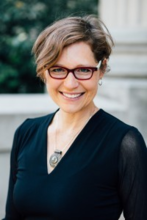
Amber Brian, Associate Professor, Department of Spanish and Portuguese
Arts & Humanities Initiative Standard Grant
Letters to the King: Networks of Imperialism and Sovereignty in Sixteenth-Century New Spain
I have requested funds to pursue archival research related to my second monograph, "Letters to the King: Networks of Imperialism and Sovereignty in Sixteenth-Century New Spain." This book project looks at questions of imperial authority, native sovereignty, and trans-oceanic communication in sixteenth-century epistolary correspondence between the king and his native vassals in Mexico, known then as New Spain. Writing in accordance with the generic expectations of humanist letter writing in the sixteenth-century Hispanic world, the authors of these letters were actively engaged with European discourses and modes of communication in their attempts to make claims on lands, positions, privileges, and titles. These letters also hint at networks of native communities that collaborated and consulted in order to gain knowledge of the necessary genres and discourses to negotiate by letter with the king. During the award period, I propose to conduct three research trips and with that new material make significant progress with my book manuscript.
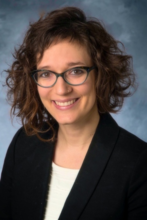
Natalie Fixmer-Oraiz, Assistant Professor, Department of Communication Studies
Arts & Humanities Initiative Standard Grant
New Grammars for Reproductive Justice
I will use the AHI Standard Grant as seed funding for my second book project, co-authored with my colleague Shuiyin Sharon Yam at the University of Kentucky and tentatively titled: New Grammars for Reproductive Justice. More specifically, the grant will be used to cover a significant portion of the expenses associated with professional transcription services.
Gendered language permeates reproductive politics, from the discourse surrounding birth to the rhetoric of motherhood and reproductive rights. Investments in feminized language are varied and various--they are often affective, political, and/or historically grounded in the lived experience of women specifically, as those frequently rendered responsible for gestating, birthing, and rearing children. Those who argue against centering neutral language in birth and reproductive justice work note why gender specificity matters—that the broader discourse of parenting strips the politics from reproductive history and obscures how cissexism and misogyny are central to reproductive violence. Still, the narrowness of gendered language in reproductive politics fails to capture gestational birth and parenting beyond the gender binary. My collaborator and I question the framing of this tension as a choice between either gender specificity or gender neutrality. We hope that those invested in reproductive justice might craft language that represents the rich diversity of gender in the context of pregnancy, birth, and parenting while retaining a clarity with regard to the histories of cissexism and misogyny that continue to shape reproductive politics.
New Grammars for Reproductive Justice centers this struggle to invent vocabularies both accurate and capacious. Through interviews with organizers from national reproductive justice organizations, community birthworkers, public intellectuals, and queer families, this book amplifies efforts to invent more inclusive language for reproductive justice while highlighting the material impacts and political stakes that language carries for women and queer families. This text, thus, invites the readers to consider how we might think beyond our current vocabularies.
This project stands to make an important contribution to scholarly and public life while enhancing my scholarly profile. The AHI Standard Grant would provide a critical source of support in the earliest stage of project development.

Colin Gordon, Professor, Department of History
Arts & Humanities Initiative Standard Grant
Dividing the City: The Race-Restrictive Deed Covenant in St. Louis
“Dividing the City” leverages a unique resource, a detailed catalogue of restrictive deed covenant for the city of St. Louis, to examine the origins and diffusion of racial restrictions on the sale and occupancy of residential property, from 1850 to 1950. These restrictions, some of which were original to new subdivisions and some of which were assembled by petition in older neighborhoods, defined African-American occupancy as a “nuisance,” prohibited sales or leases to African-Americans, and became the driving force behind the stark segregation of northern and border cities over the first half of the twentieth century. The goals of this collaborative project (local partners include Legal Services of Eastern Missouri and the Equal Housing and Opportunity Council of Metropolitan St. Louis) are to assemble a public archive of these agreements (we have identified just over 800), map their spread across the City, and to develop public programming around this history. In turn, the archive will provide a rich resource for scholarly analysis of these agreements, the driving forces behind them, and their impact in both “restricted” and “unrestricted” neighborhoods. Following the lead of similar projects in Seattle and Minneapolis, we also hope to open a conversation about changing the law in Missouri, making it easier to strike restrictive language from both property records and the bylaws of homeowners’ associations.
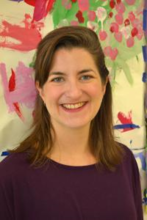
Brady G'Sell, Assistant Professor, Department of Gender, Women's and Sexuality Studies
Arts & Humanities Initiative Standard Grant
Homemaking Abroad: Migrant Women's Experiences of the New South Africa
Just twenty-five years since apartheid ended, South Africa is presently experiencing a surge of xenophobic violence that is dividing the country and disrupting efforts to build a new nation distinct from its racist past. This September saw another wave of riots that left thousands of migrants with insecure futures. Such issues are not unique to South Africa amidst a worldwide trend of human displacement. Yet the country’s particular history and social context offer valuable insight into broader concerns. Drawing on humanities methods, my project builds an archive of migrant women’s experiences during these turbulent times. This archive will be vital to my scholarship on the intertwined processes of nation-building and family-making in South Africa. My urban fieldsite hosts many female migrants from other countries in the African continent, and their struggles over housing, jobs, and family-making are metonyms for global debates over belonging and entitlement. Though the imagined migrant in South Africa remains male, African migrant women face particular forms of gendered and racialized discrimination. Women I know have endured nighttime household raids or refusals of obstetric care and threats of sterilization that are eerily reminiscent of South Africa’s apartheid past. My project utilizes the expertise of cultural insiders to employ three methods—hearsay ethnography, native-language interviews, and documentary photography—that I could not undertake myself. By recording observations of casual conversations about migration, collecting narrative of migrant women themselves, and visually documenting women’s efforts to carve out places of belonging, the project will produce an invaluable archive of this critical moment in South Africa’s history. Data from this archive will inform my tenure book, enable the writing of a high-impact journal article, and launch my second project. By asking questions about how women migrants navigate the colliding forces of integration and exclusion in the post-apartheid era, my research will contribute to scholarship on the feminization of migration, South-South migrant flows, and import of the humanities to address complex social issues.
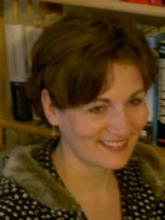
Michaela Hoenicke-Moore, Associate Professor, Department of History
Arts & Humanities Initiative Standard Grant
The Varieties of American Patriotism: Americans Debate Their Country's Role in the World from the 'Good War' to Vietnam
How does our understanding of U.S. foreign policy debates change, if we take the people, that is citizen voices, into account? My primary-source-based study seeks to answer this question by investigating foreign policy views of ordinary Americans and situating them in the framework of official rhetoric, policies, and expert discourse. Broadening our conception of domestic conflict over military interventions and re-integrating citizen voices, brings underexposed and unsettling questions about the nature of American democracy and its compatibility with military globalism into clearer focus. It reveals wider and deeper contestations over issues long debated by foreign policy experts: what purpose and whose interests does U.S. foreign policy serve?
In order to capture the diversity of foreign policy-relevant views in civil society and to track how they changed over time, I analyze citizen responses in letters, interviews and memoirs, to three wars which the U.S. fought with a conscript army: World War Two, the Korean “police action” that turned the Cold War unexpectedly hot in Asia, and the war in Vietnam. All three conflicts were contested, though at different points in the cycle of mobilization, military campaigns, wartime media coverage, and aftermath. Each war coincided with profound changes at home, including race relations and gender norms, and resulted in partisan realignments on the question of the use of military force. Studying the corresponding foreign policy debates as well as the wars’ legacies in context, reveals the manifold interpretive associations among the good war, the forgotten war, and the quagmire: official lessons and analogies were often enabling, in contrast to personal experiences and memories which were more often cautionary.
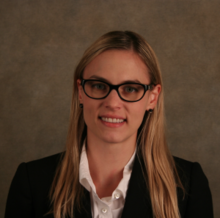
Jennifer Janechek, Lecturer, Department of Rhetoric
Arts & Humanities Initiative Standard Grant
'Digital Disability Studies' Advanced Research Consortium Node
I am applying for an Arts and Humanities Initiative Standard Grant to support my creation of an Advanced Research Consortium (ARC) “node” on Digital Disability Studies. These nodes are “period-specific and thematic digital research environments” created by digital humanists in conjunction with ARC staff at Texas A&M University (CDHR, 2019). Through negotiations with entities like JSTOR, ProQuest, and libraries, they aggregate primary and secondary sources on a specific research topic, as well as relevant digital humanities scholarship, the latter of which is selected, vetted, and developed further with help from the ARC node’s technical and editorial boards. These peer-reviewed resources are made available through a keyword-searchable website that greatly benefits the scholarly community.
Having been through a rigorous review process and approved by the ARC’s board of directors, my project, Digital Disability Studies (DigiDS), will provide the disability studies community with such an inclusive research environment, attesting to the richness and diversity of scholarship in this area, fostering the creation of new disciplinary knowledge by supporting digital humanists in their project development, and collaborating with accessibility specialists to be at the forefront of accessible collections design. Currently, there are only five ARC nodes in existence, as ARC is highly selective and the nodes are major undertakings typically carried out with the support of a team of research assistants. DigiDS joins the ranks of well-known research compendiums like NINES (hosted at the University of Virginia) and ModNets (hosted at Loyola University Chicago) and boasts a review board of the top scholars in the field of disability studies. With the support of an AHI Grant, I will be able to spend Summer 2020 focusing exclusively on the technical development of the DigiDS website, which requires a significant amount of training from the ARC team, consultation with the Digital Studio at the University of Iowa, programming and website design, research, metadata aggregation, and outreach and coordination with other collections. At the end of Summer 2020, DigiDS will have its basic infrastructure built and will be able to make a “soft launch.”
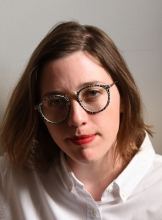
Nellie Kluz, Lecturer, Department of Cinematic Arts
Arts & Humanities Initiative Standard Grant
J-1s in Wisconsin Dells: Creative Non-Fiction Film
My creative research project is a feature length (60-75 minute) non-fiction film focusing on the experiences of international students who come to the seasonal resort city of Wisconsin Dells, WI each summer as temporary service industry workers. J-1s enter US under the auspices of the J-1 visa Work and Travel program, which is administered by the State Department. Students come from countries including Turkey, Russia, Dominican Republic, Romania, Bulgaria, Jamaica, China, Thailand, Jordan, Kazakhstan, Spain and Mongolia.
J-1s provide ample cheap labor, and often spend their majority of days working at multiple low-wage jobs with little time for travel and exploration. Students are vulnerable to labor exploitation in terms of unpaid overtime hours, sexual harassment at work, and other unsafe and/or undesirable conditions.
The goal of this project is to create a detailed documentary portrait of J-1 students, a complex, nuanced and formally innovative film that focuses on the sensory details of J-1's lives in the unfamiliar and somewhat bewildering environment of Wisconsin Dells. I aim to generate interest in and empathy for young temporary migrants who come to the US, communicating that these young migrants form an integral element of resort ecosystems like the Dells, and deserve consideration and labor protections.
I will seek out specialized and general audiences for this project, at self-organized screenings intended for the J-1 community, film festivals, cinemas and online screening platforms.
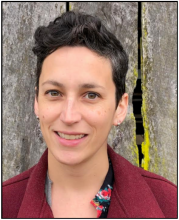
Louise Seamster, Assistant Professor, Department of Sociology and Criminology
Arts & Humanities Initiative Major Project Grant
Poison Pen: Tracing The Digital Paper Trail of the Flint Water Crisis
I am seeking Arts and Humanities Initiative Major Grant funding to collaborate with the Digital Scholarship and Publishing Studio to organize and interpret a public email archive from the Flint Water Crisis using “digital ethnography,” and to create an online database for public access to the data. In early 2016, Michigan’s Governor Snyder released a million-page public archive of emails relating to the Flint crisis between state agencies—but in unsearchable form. We need to know more about Michigan’s role in the crisis: about the decisions made by unelected state-appointed “emergency managers” given total control of the city (and most other black-governed cities in the state), decisions approved by Michigan’s Department of Environmental Quality. But initial analysis of the email archive shows these state actors excluded and derided Flint advocates and elected officials as they strategized ways to delegitimize Flint residents’ testimony about their water quality, redirect press, and defend bad water-testing techniques.
My multi-method ethnographic research employs digital humanities methodology for archiving, classifying, interpreting and annotating the archive. This project consists of two parallel tracks: multiple academic publications analyzing the dataset, and a searchable website repository for the dataset, which will also ultimately have interactive features incorporating my research visualizations and allowing contributions to the project from the public. A 2019-2020 AHI grant will support prototype of a website and initial data analysis and larger grant applications, and facilitate undergraduate analysis in an Applied Research class taught 2020-2021.
The impact of the larger project comes at multiple levels. First, we will better understand the causes and responses to the Flint Water Crisis, particularly how it was shaped by state-level bureaucracy. Second, the project will render crucial public data more accessible to the public and model effective dissemination, an increasing concern as data proliferates. Finally, my academic work will help shape debates in the fields of urban politics, policy, environmental justice, and financialization as I use Flint’s case to reframe how we think about black and white governance in cities.

Travis Vogan, Associate Professor, Department of Journalism and Mass Communication
Arts & Humanities Initiative Standard Grant
LeRoy Neiman: Populist Artist and Pariah
LeRoy Neiman (1921-2012) was arguably the most famous and wealthiest artist of the twentieth century. He cut an unmistakable figure that included a jet-black handlebar mustache, long cigar dangling from his teeth, loud suits, and eye-catching female assistants. Neiman paired this image with an accessible artistic approach that displayed colorful scenes of leisure, sporting events, and celebrities. Moreover, his work circulated in spaces outside of the museums where art stereotypically lives. His art appeared in Playboy; showed up on TV to complement sports coverage; and was sold as prints in malls and gift shops. Neiman’s accessibility, commercial success, and popularity combined to inform his nearly comprehensive dismissal by art critics, academics, and other cultural gatekeepers. The fact that Neiman has received little scholarly attention despite his outsize status demonstrates the power of such discourses to expel artists who do not abide by established norms. But this book project posits that we can learn just as much about these norms—and the culture they help to create—from studying those artists that have been condemned as we can from studying those that have been canonized.
LeRoy Neiman: Populist Artist and Pariah will trace Neiman’s life story and use it to explore the attitudes that inform which artists, activities, and artifacts are deemed respectable and which attract excoriation over time and in certain contexts. It will combine archival research, interviews with those who knew and worked with Neiman, and analysis of his work to explore how Neiman became a popular artist, how critics responded to his output, and how he struggled to balance his efforts to acquire money and fame with a quest to achieve respectability. In doing so, it will consider how Neiman’s participation in various popular settings simultaneously drew adoration from mainstream audiences and scorn from the art establishment. The debates Neiman sparked help to probe popular culture’s conflicted relationship to art. More specifically, they illustrate a previously unexamined nexus of art, sport, media, and commerce that this interdisciplinary book project will bring into focus.
October 2018 Arts & Humanities Initiative (AHI) Awardees
About the Arts & Humanities Initiative (AHI) Program
The Office of the Vice President for Research is proud to present the October 2018 Arts & Humanities Initiatives (AHI) Program Awardees:

Matthew Arndt, Associate Professor, School of Music
Arts & Humanities Initiative Standard Grant
Elaboration in Georgian Chant
Professor Arndt will study the elaboration of simple musical patterns to produce complex ones in three-voiced sacred chant from the Republic of Georgia. Georgian chant has experienced a rebirth since its rediscovery in the 1980s, after being literally buried underground during the interwar period to protect it from the Bolsheviks. Since Georgia gained independence in 1991, the academic study of Georgian chant has also been pursued with growing intensity, primarily according to historical and ethnographic methods. At the same time, in the last decade there has been a burgeoning of theoretical and analytical study of world music. But little of this latter work has so far addressed Georgian music. Bridging these two broad research areas (the theoretical study of world music, and the study of Georgian chant), Arndt aims to investigate the unity—posited by practitioners—of an ancient, simple manner of Georgian chant with two increasingly modern, elaborate manners. What specific forms of elaboration might render the latter two manners more elaborate and unified with the first? In Western music, such elaboration has been studied for about three and a half centuries, and especially during the past century, owing to the pioneering work of Austrian music theorist Heinrich Schenker. But in Georgian music, such elaboration has hardly begun to be studied. Arndt will extrapolate specific forms of elaboration by synthesizing (1) empirical data about melodic and harmonic probabilities in transcriptions of the three manners of chant, (2) interpretation of a manuscript containing the sole extant illustration by one of the original master chanters of relations between the three manners of chant, and (3) experiential learning of style through attending a Georgian singing retreat with master musicians. The empirical and experiential components of the method are meant to help mitigate bias in interpreting materials from another culture. Arndt anticipates that this study will precipitate in a substantial article. This research will shed new theoretical and practical light on the treasury of Georgian chant.
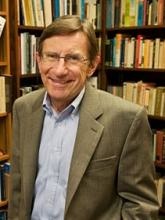
Ed Folsom, Professor, Department of English
Arts & Humanities Initiative Major Conference Grant
Walt Whitman at 200: The Bicentennial Symposium
I am applying for an AHI Major Conference grant to support a rolling symposium, “Walt Whitman at 200: The Bicentennial Symposium,” planned to accompany and coincide with a major new exhibition of Whitman’s work that will run in the Main Library’s new first-floor gallery from April until August 2009. One of the most influential writers in American literature and a widely recognized and innovative thinker about the evolution of American democracy, Whitman will be celebrated during his 200th birthday year around the nation and around the world. The Iowa symposium will be one of the scholarly highlights of the year and will present a significant reassessment of his work and his impact on American culture. This will be a unique opportunity for our graduate and undergraduate students in American literature, American Studies, Digital Humanities, and Book Studies. Each of the visiting scholars in the rolling symposium will agree not only to present a public lecture but to lead intensive discussion sessions with students and interested faculty members. Each of the presentations will respond to the work of the other scholars in the symposium. I will give an opening talk on Whitman’s often overlooked late writings and how Whitman extended his innovative poetic power in some surprising ways very late in his life. The five guest professors—Betsy Erkkila (Northwestern University), Jerome Loving (Texas A&M University), Zachary Turpin (University of Idaho), Ivy Wilson (Northwestern University), and David Reynolds (CUNY-Graduate Center)—will help the audience for the exhibition and symposium understand the importance of Whitman’s deep involvement with the quickly evolving printing and publishing enterprises in nineteenth-century America. The reassessments and fresh angles on Whitman’s work that the symposium participants will be producing will be gathered as a special double issue of the Walt Whitman Quarterly Review. The Whitman community is a large and active one at the University of Iowa, where much of the Whitman scholarship of the past forty years has been produced and published, and the series of presentations in this rolling symposium will be one of the major events of the Whitman Bicentennial.
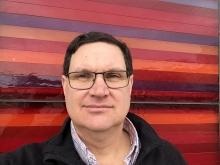
Matthew Hill, Associate Professor, Department of Anthropology
Arts & Humanities Initiative Major Project Grant
The Social Landscape of Wood: A Comparative, Collaborative Project in Rajasthan and
Odisha States, India
Our work examines the complex social, economic, and political landscape of household wood use in India. Approximately 200 million households in India still rely on wood for their daily energy needs, in spite of the sustained and often invasive efforts to eliminate fuel wood (which preferentially target poor women). Vast effort has been expended on developing cook stoves that reduce pollution, but much less effort on understanding why new stove designs or alternative energy sources fail to replace the standard wood-burning chulha. Greater understanding may come from considering wood’s social and economic life as constructed by women and their families. Our project follows wood and the people who use it across two regions in India, one in Rajasthan and one in Odisha, to describe a poorly understood informal economy linking forests, homes, and local and regional markets. As anthropologists, we will use ethnographic methods such as personal interviews and participant observations to explore people’s lived experiences with wood and their choices surrounding its collection, use and sale within particular physical, social, economic, and political environments. AHI funding will support our initial data collection and new collaborations with researchers in India. We will conduct fieldwork in 2019 during the summer and winter seasons in the “wood-poor” state of Rajasthan. We will also begin a collaboration with two colleagues, Drs. Gopal Krishna Sarangi and Swarup Dutta at the TERI School of Advanced Studies, who will contribute crucial economic and development expertise and help us expand our work into the “wood rich” state of Odisha. Our results will contribute to one or more journal articles and large external grant applications for future fieldwork in Rajasthan and Odisha. Ultimately, we believe our data may help policy-makers better predict the social, economic, and geographic conditions that support or undermine large-scale energy interventions (such as the recent Pradhan Mantri Ujjwala Yojana program by the Indian government).

Brenda Longfellow, Associate Professor, Division of Art History
Arts & Humanities Initiative Standard Grant
Female Tomb Builders and Posthumous Honors for Women in Ancient Pompeii
I am applying for an AHI Standard Grant to research and write a book chapter on female funerary monuments in the ancient city of Pompeii in Italy. In preparation for writing the chapter, I will study and photograph the architectural, decorative, and epigraphic remains of Pompeian tombs built by women as well as the funerary equipment awarded to Pompeian women by the town council. This research will provide the source material for a chapter in my singleauthor book titled Women in Public in Pompeii. Women comprise half of the known tomb builders in Pompeii and received more than one third of the tomb plots awarded to individuals by the city council, and so female economic agency and civic connections are more visible in the cemeteries than anywhere else in the city. The chapter will further our understanding of the historical nature of female involvement in the larger community and outside of the domestic sphere.
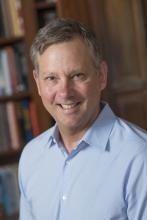
Richard Priest, Associate Professor, Department of History
Arts & Humanities Initiative Standard Grant
Deepwater Horizons: The Epic Struggles Over Offshore Oil in the United States
This grant will be used to support the final stage of research for a book project titled, Deepwater Horizons: The Epic Struggles Over Offshore Oil in the United States, which provides the most deeply researched and comprehensive historical narrative of the governance of offshore oil development in the United States. It demonstrates how these struggles played out at the center of American politics, contesting the boundaries of the American nation-state, the contours of federalism, the shape of the American energy system, and the environmental limits of resource extraction. For readers interested in understanding the larger historical context behind Deepwater Horizon oil disaster – the leading news story of 2010 in the United States – this book will become the definitive study. Given the battle lines drawn for the proposed federal offshore leasing plan for 2019–2024, which proposes opening up 90 percent of the U.S. coastline to drilling, Deepwater Horizons will inform political and policy discussions about offshore oil for many years to come. This project is based on more than a decade of original primary research in manuscript collections, congressional hearings, court cases, oral histories, and law review articles, as well as the voluminous records of the Department of the Interior at the U.S. National Archives and related collections at several U.S. presidential libraries. I request AHI funding to cover travel expenses for research trips to three presidential libraries and two archives in Louisiana: the Richard M. Nixon Presidential Library in Yorba Linda, CA; the Jimmy Carter Presidential Library in Atlanta GA, the Ronald Reagan Presidential Library in Simi Valley, CA; Louisiana State University, Hill Memorial Library Special Collections, in Baton Rouge, LA; and the Nicholls State University Archives and Special Collections in Thibodeaux, LA. I have identified a number of collections at each place with important documents relating to U.S. OCS law, politics, and policy that will fill in gaps in research already completed and clarify some unanswered questions relating to the role of OCS policy in the formulation of overall energy policy during the 1970s and 1980s and the influence of Louisiana politicians in the 1950s and 1960s.
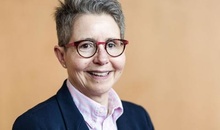
Kim Marra, Professor, Departments of Theatre Arts & American Studies
Arts & Humanities Initiative Standard Grant
The Pull of Horses in Urban American Performance, 1860-1930
A digital arts and humanities project, The Pull of Horses synthesizes archival and live performance sources into a 60- minute large-scale immersive video animating historical human-equine interactions for scholarly and wider public audiences. The video aims to illuminate how horses shaped gender and other human identities and bodies in and beyond the emerging U.S. cultural capital, New York City, c. 1900 during a pivotal era of industrial transformation when 130,000 horses dwelled among 1.85 million people on the island of Manhattan. To evoke that now forgotten density of equine and human traffic, the video projects life-sized historical images and film clips on a 9’x16’ screen set at ground level where viewers can stand on the same footing with the animals and feel their presence and power in terms of scale, proximity, and motion. A customized, historically accurate soundscape edited in surround sound brings the massive pull of working equines in harness further to life. For the last two years, in conjunction with writing a book on the same topic, I have been collaborating on this project with Mark Anderson, Digital Collections Librarian in the UI Libraries Digital Scholarship and Publishing Studio, and, since Summer 2017, with Theatre Arts major and extraordinary sound and video designer, Wade Hampton, who graduated in August 2018. As PI, I am applying for an AHI Standard Grant to support our continuing work together from January to July 2019 to complete the video by building the remaining three of five sections; testing the immersive, large-scale display with all the requisite equipment; and conducting final editing after that test. Animating historical human-equine interactions to scale can provoke our critical thinking about bodies and technology for consideration of what was lost as well as gained in the transition to mechanical power, questions that resonate today when mechanization again is supplanting living beings in large sectors of the economy. Moreover, because animals can forge connections between humans across so many divides, the Pull of Horses project, through projected gallery and historical museum showings in Iowa and elsewhere, can broaden appreciation of arts and humanities scholarship in the public sphere.
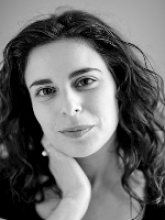
Robyn Schiff, Professor, Department of English
Arts & Humanities Initiative Standard Grant
Information Desk: An Epic
I am applying to the AHI Program to support extensive research at two major archives in NYC: the Thomas J. Watson Library and exhibition archive at the Metropolitan Museum of Art, and the Wallach Division of Art, Prints and Photographs at the New York Public Library. I intend to spend three weeks immersed in each archive completing the research crucial to finishing my manuscript-in-progress, Information Desk: An Epic, a book-length poem in the tradition of the female epic that draws on my experience formerly fielding questions at the information desk at the Metropolitan Museum of Art, where I was a staff member two decades ago, when I was a young adult. Both a work of art history and a personal coming-of-age set within the museum itself, Information Desk: An Epic is as concerned with the forces of power and world history that drove the museum’s early encyclopedic collecting as it is with the making of and the meanings of art. Meandering through the physical building and time traveling through the art it stores, Information Desk: An Epic contemplates the political and emotional complexities of making, collecting, possessing, and representing, while it explores the spiritual meanings wrought by aesthetics. This project is a significant deepening of my critically acclaimed ambitions and accomplishments as a poet, and will be published as a book in due course, following the publication of its separate cantos, or chapters, in prestigious literary journals. My stature as a poet richly contributes to the excellent writing tradition at Iowa, and my work is nationally known for how its emotional depth is propelled by intense formal ingenuity. The New Yorker summarized my contribution to the field of contemporary poetry by stating that my attentive, unsettling poems “of almost forensic specificity.... offer something few poets ever discover: a vision of the whole world.” That “forensic specificity” is informed by my rigorous adherence to fidelity of content and image, and research is central to my artistic process. I am eager to complete my art historical inquiries at the Watson Library and the Wallach Division of the New York Public Library.

Loren Glass, Professor, Department of English
Arts & Humanities Initiative Standard Grant
Accessing the Writers' Workshop Records
I’m applying for an AHI Standard Grant to facilitate scholarly access to the Iowa Writers’ Workshop records currently held under restriction in the Special Collections and University Archives. Requests for access are currently handled through the Transparency Office, and the fees are prohibitive, meaning that these records are essentially inaccessible to scholars for an indefinite period of time. Furthermore, the finding aids lack adequate detail for scholars to determine whether or not the materials they require are even in the records. I strongly feel that the University of Iowa should facilitate the processing of these records so that a version which doesn’t violate confidentiality or privacy laws can be made available to scholars interested in writing about the history of creative writing. Since the publication of Mark McGurl’s The Program Era: Postwar Fiction and the Rise of Creative Writing (Harvard 2009), interest in this history has increased, and Iowa stands at the center of the story. As McGurl himself emphasizes, “We need to start documenting this phenomenon, moving out from the illustrious case of the Iowa Writers’ Workshop…This enterprise is our literary history.” This literary history cannot be written without access to these records.